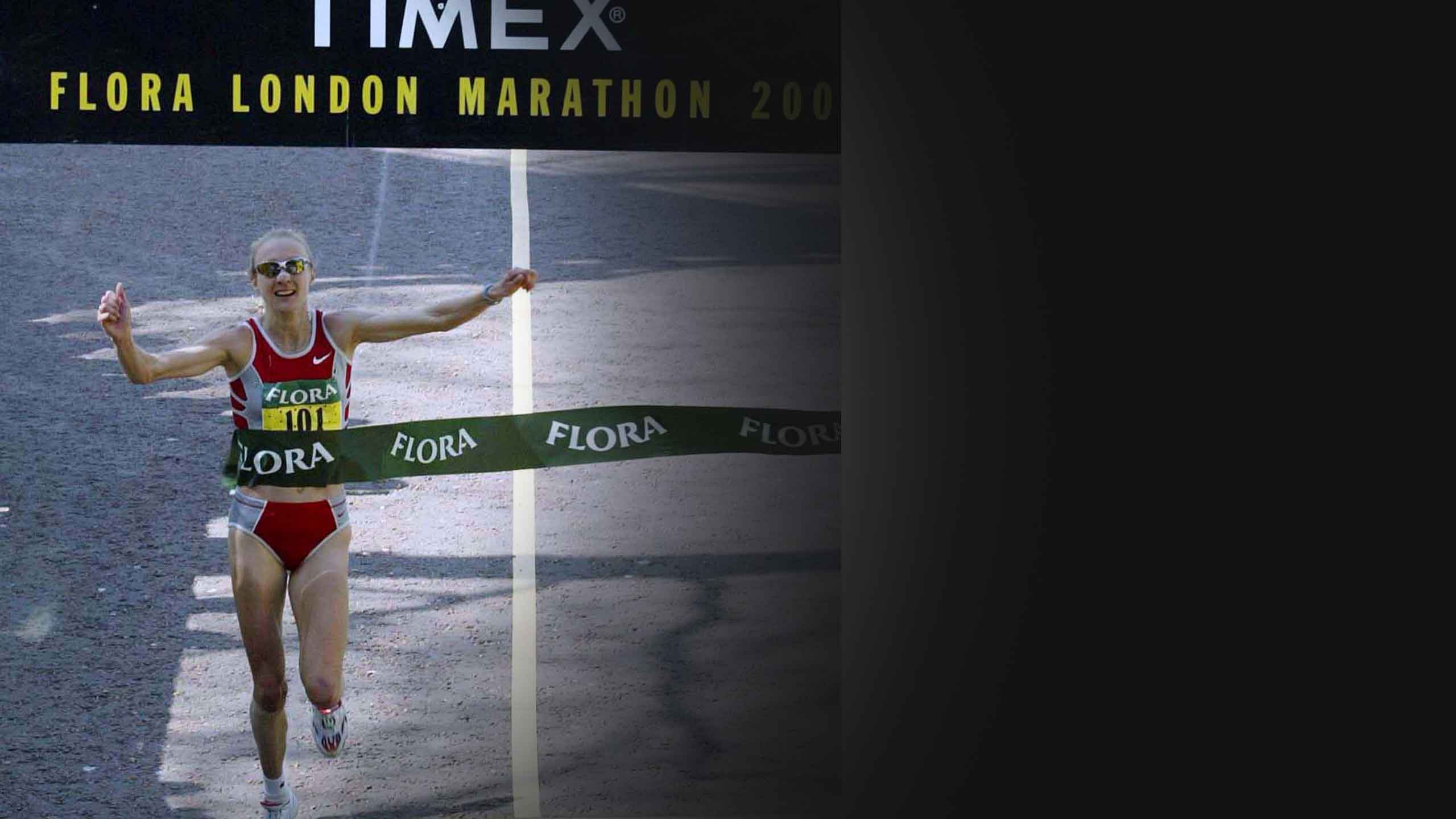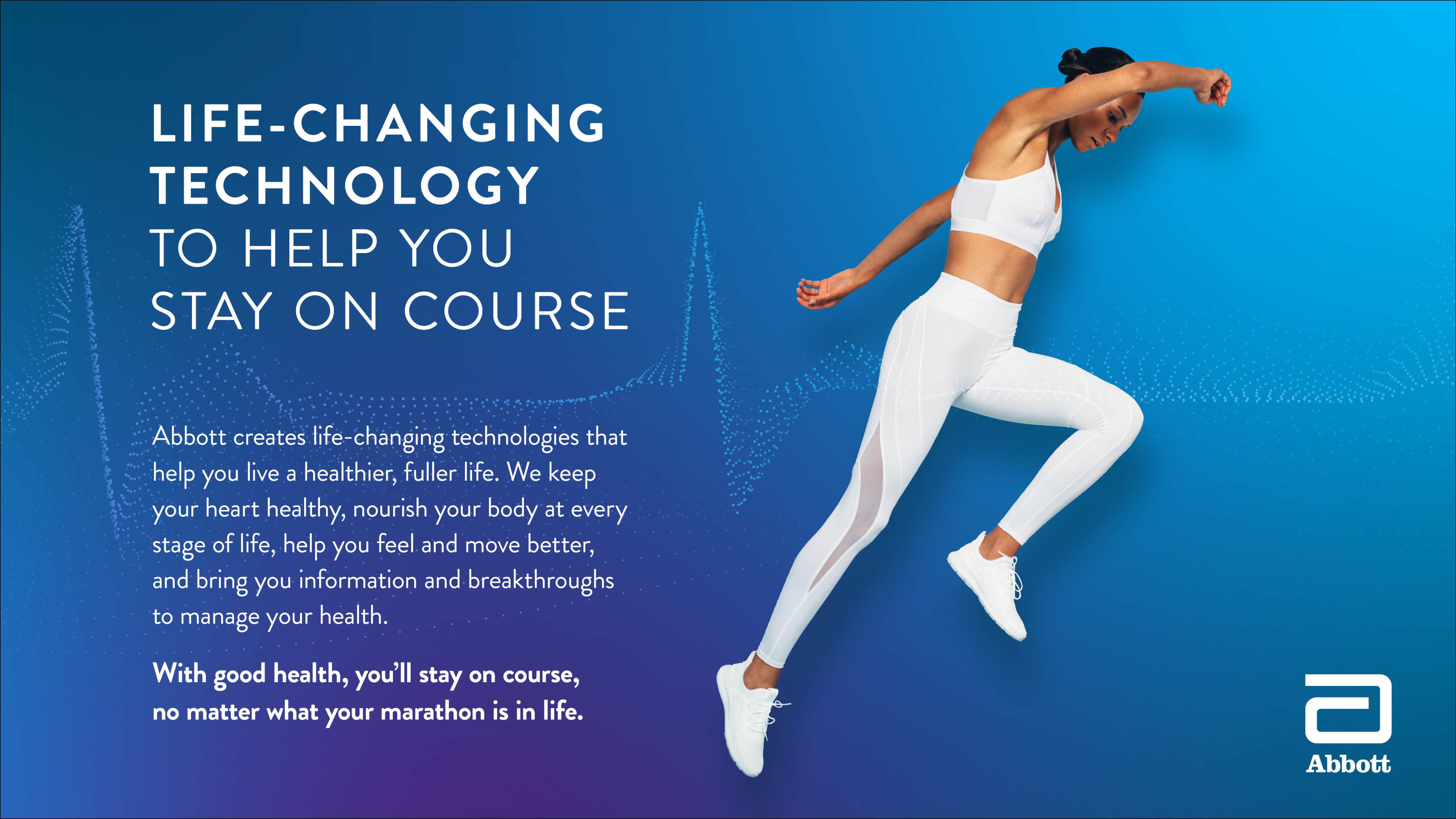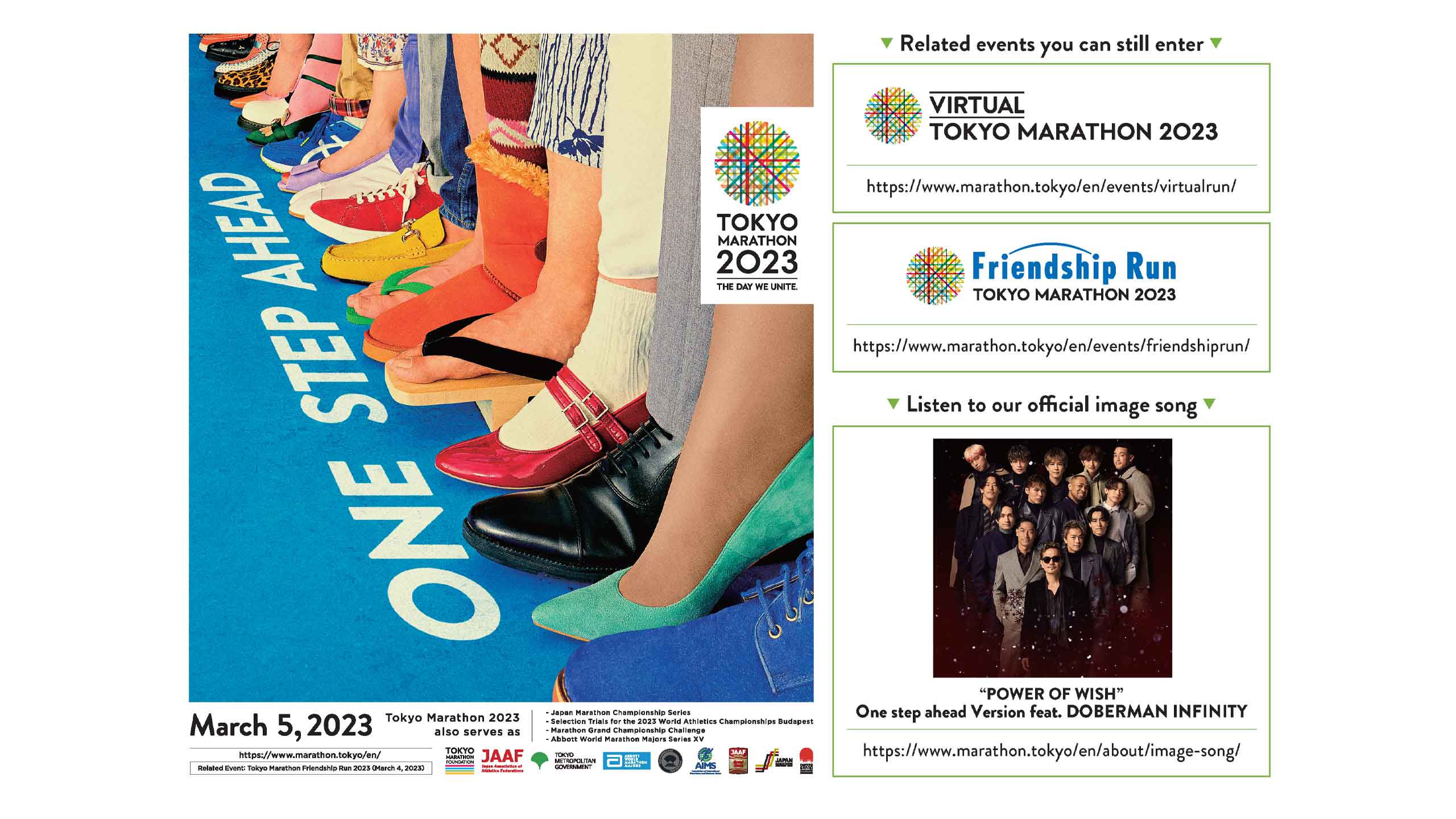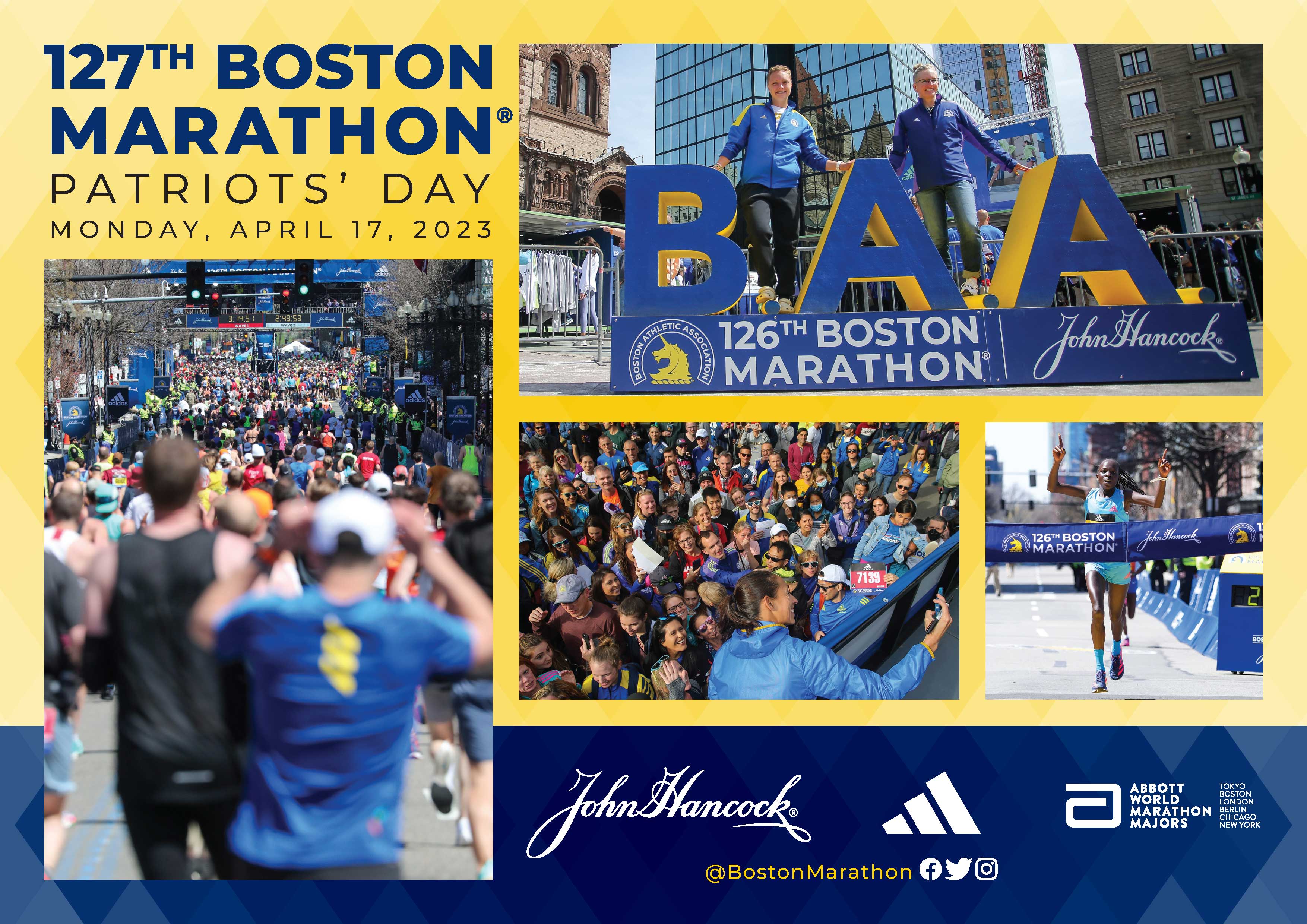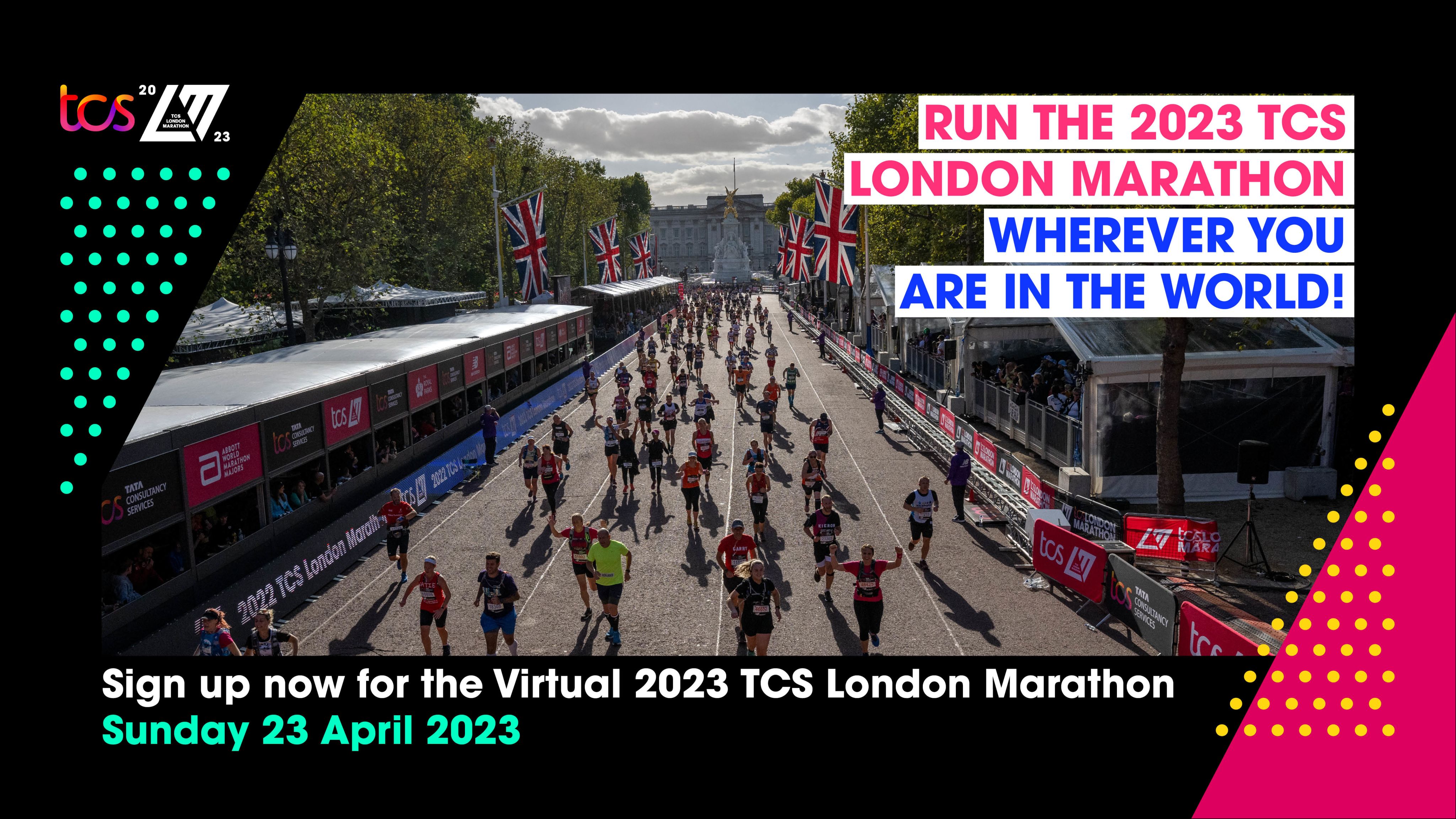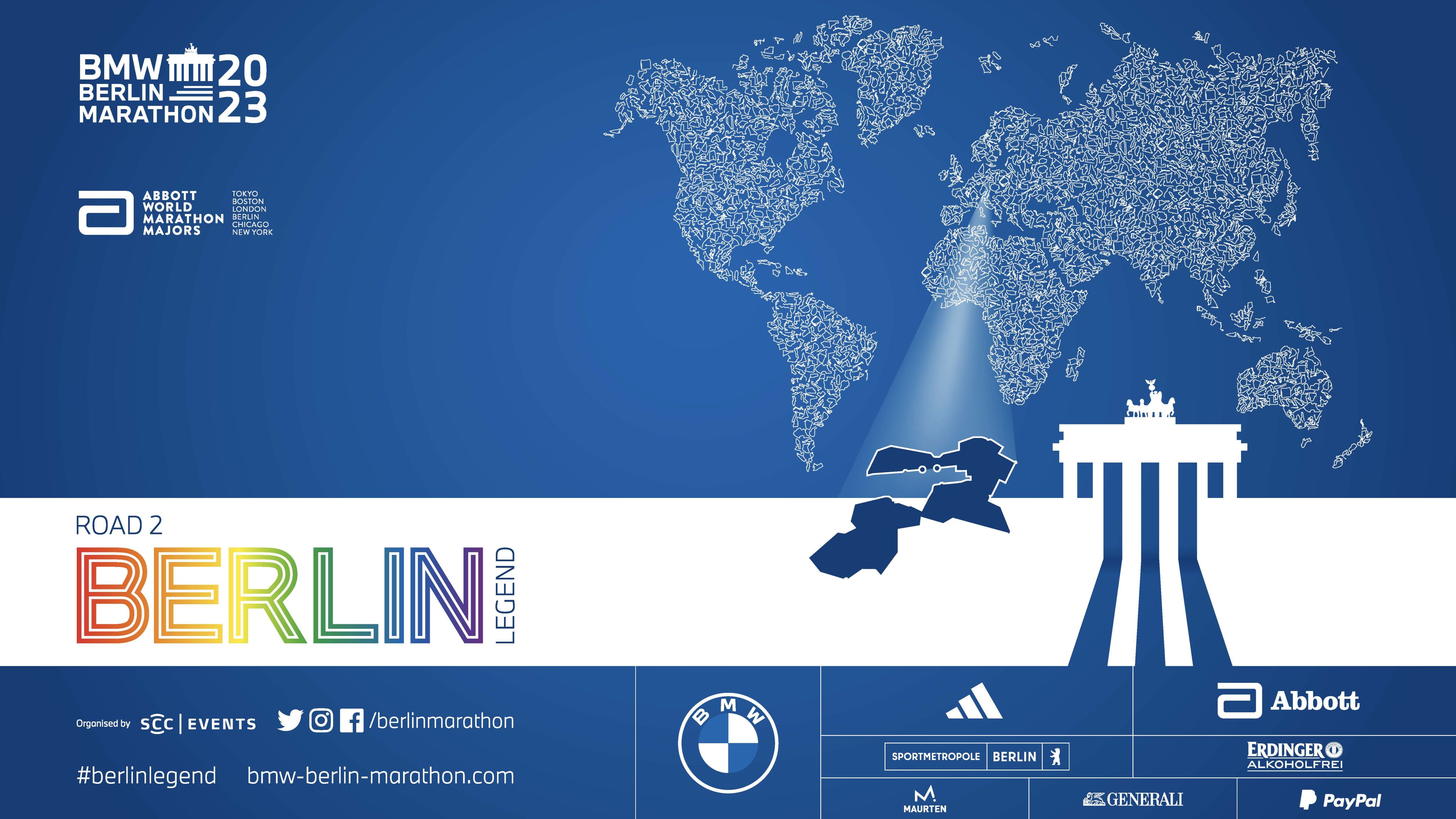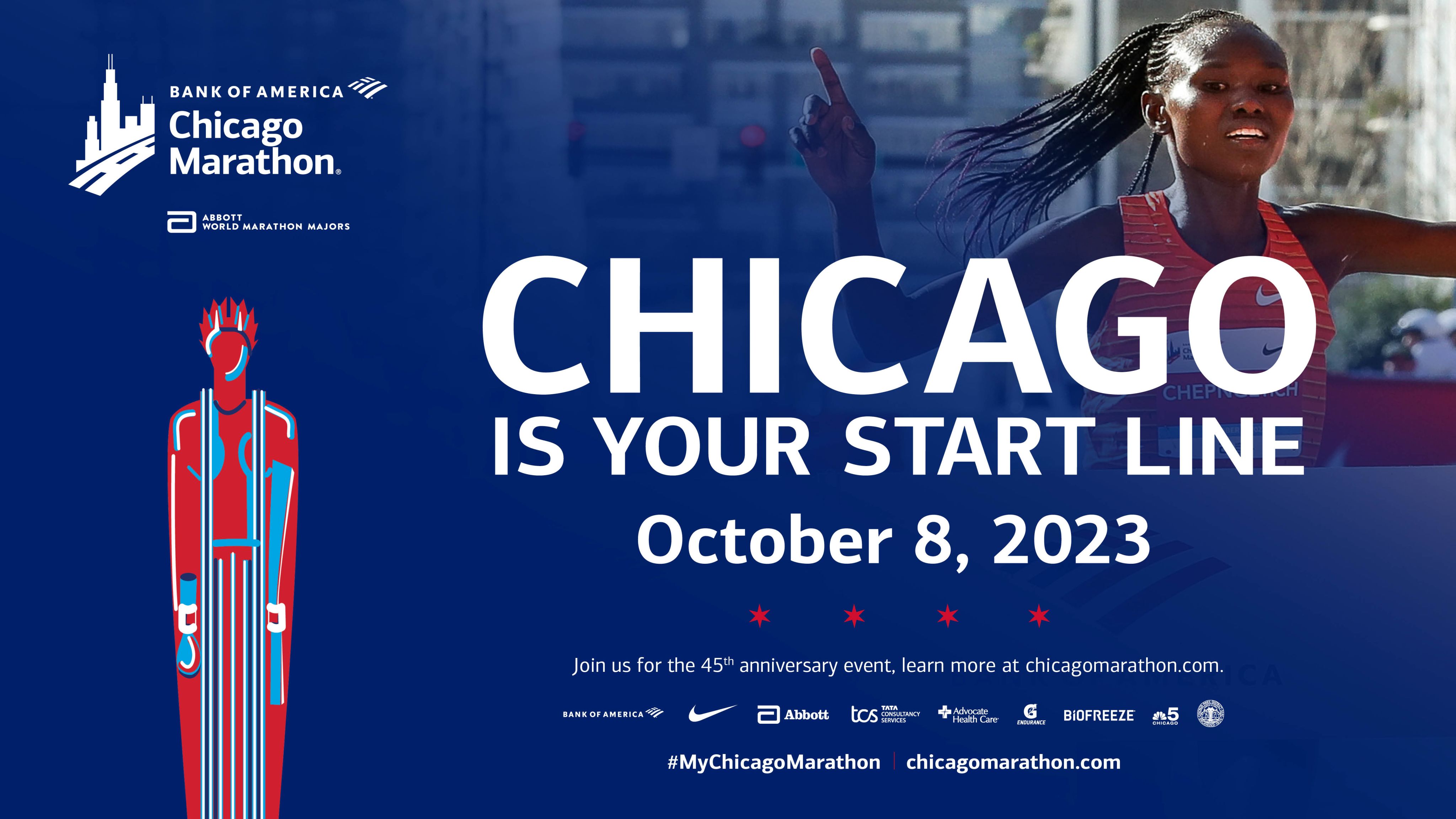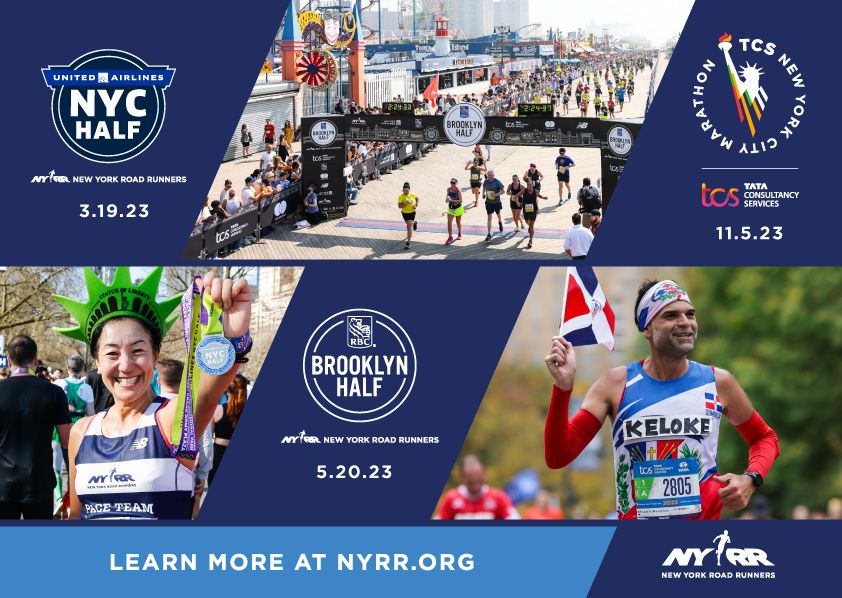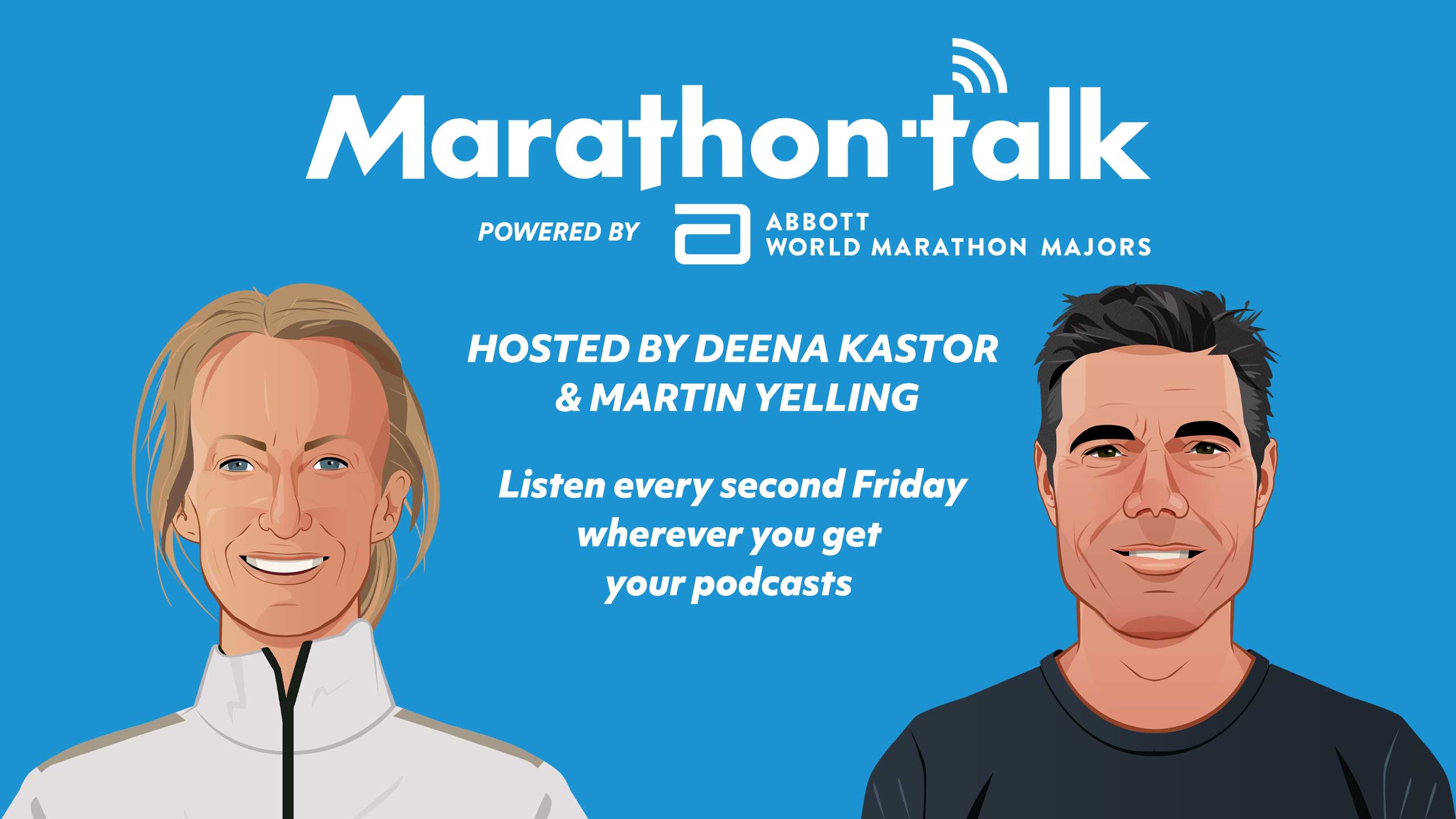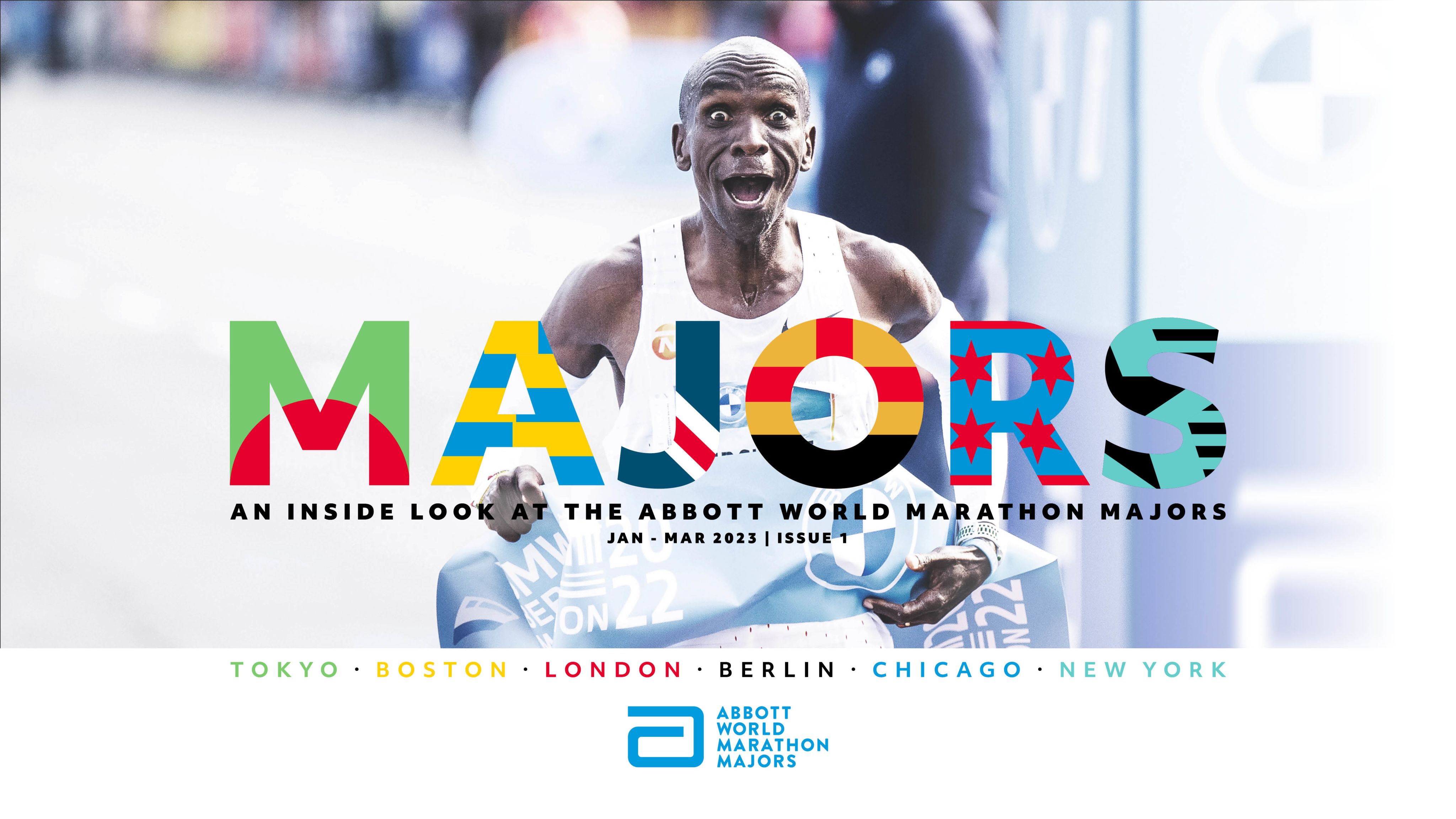
Welcome to the first issue of MAJORS, your quarterly inside look at the Abbott World Marathon Majors!
In each issue we’ll bring you the latest news on the six greatest marathons on the planet, with big name interviews from the people who make these races happen, as well as features on some of the fantastic elite athletes who thrill us with their performances.
These races are about more than just the champions, of course. We will also bring you stories from our inspiring family of Six Star Finishers and the impressive age group athletes competing for places and podiums in the AbbottWMM Wanda Age Group World Championships.
We have seen the AbbottWMM community grow exponentially in recent years, from runners starting their Six Star journey to newcomers taking part in our regular virtual challenges in the Global Run Club.
This magazine unlocks the door to all of the opportunities we offer to be part of a truly global network of runners. I hope you find out more than you knew before about these incredible events and, most of all, I hope you feel inspired to get out there and discover the true power of the amazing marathon community.

Dawna Stone, CEO, Abbott World Marathon Majors
THE WARM UP
10,000 incoming!
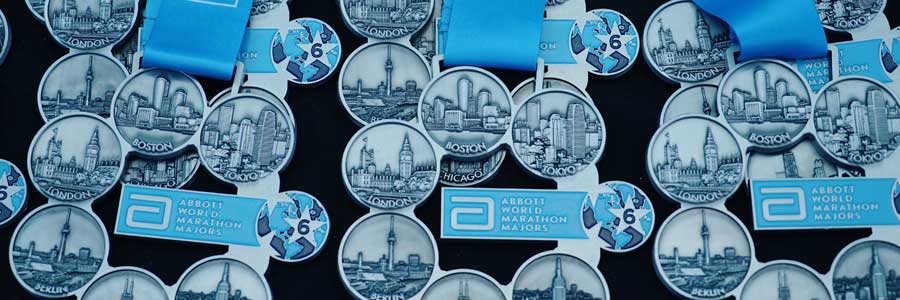
The Six Star Finisher Hall of Fame is set to pass the 10,000 mark in Spring 2023.
The year of 2022 saw 982 names added to the list of runners who have completed all six AbbottWMM races, taking the grand total at the end of last year to 8,148.
With the anticipated return of a full field at the Tokyo Marathon in March this year, it is expected that by the time we reach the end of the first full spring Majors season since 2019, the Six Star Finisher family will be more than 10,000 strong.
EXILE to take Tokyo one step ahead

Japanese pop group EXILE will serenade runners on their way at the Tokyo Marathon 2023.
The band have been chosen to write this year’s signature ‘image’ song for the marathon, Power of Wish that resonates with the theme of the 2023 edition of each and every person taking one step at a time forward as encapsulated in the event’s message, “ONE STEP AHEAD.” Incredibly, there are 14 of them in the group. That must be a huge tour bus.
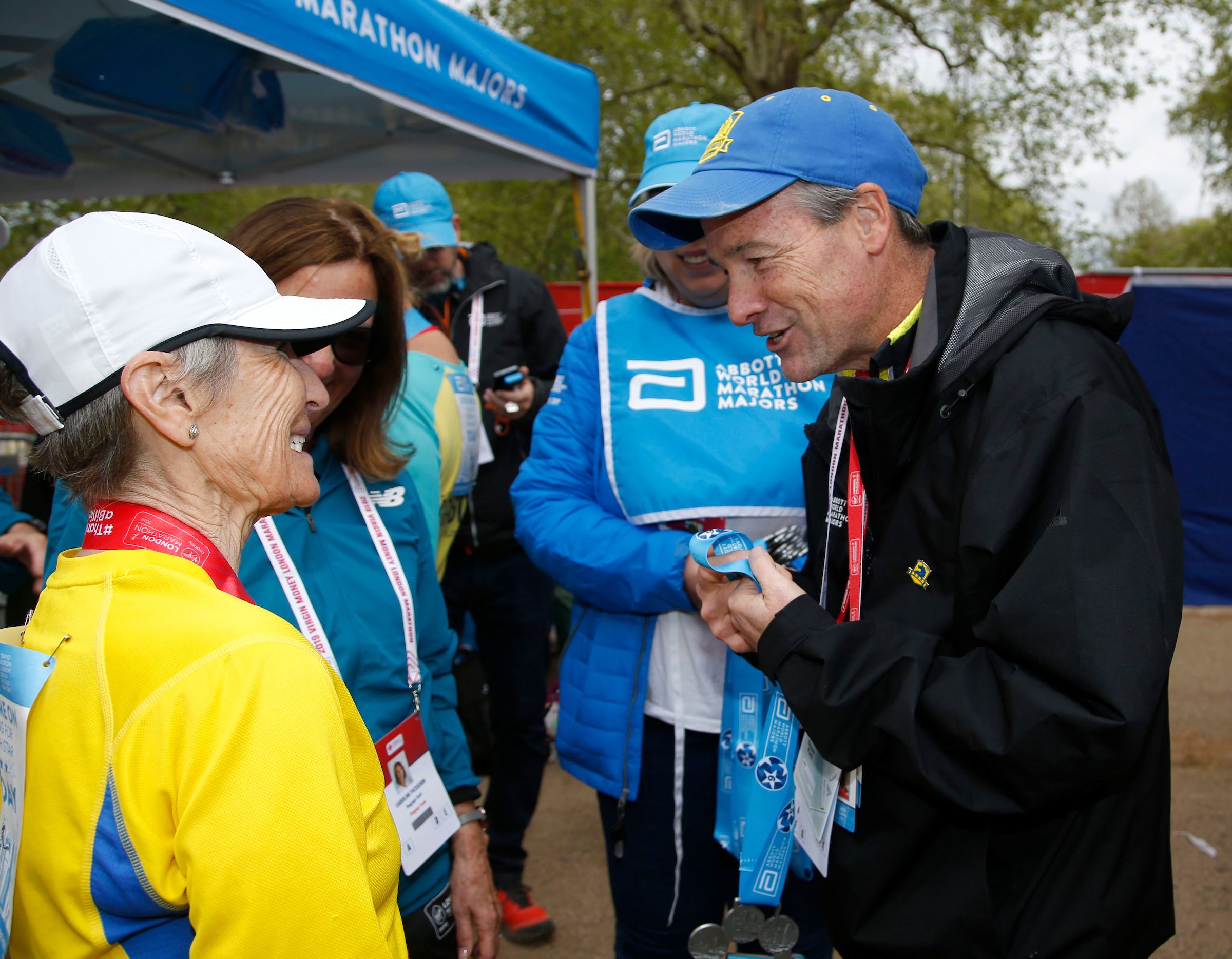
New Boston CEO is marathon Jack flash
The newly appointed CEO of the Boston Athletic Association, Jack Fleming, is no slouch himself when it comes to the marathon.
In 2020 he registered a score of 3,350 points in the M50-54 category of the AbbottWMM Wanda Age Group World Rankings for a time of 3:13:07 at the Rock ‘n’ Roll New Orleans Marathon. He then cracked the three-hour barrier the following year with 2:56:05 at the Providence Marathon where he scored 3,690 points.
It seems fitting, then, that the first race with Mr Fleming at the helm of the B.A.A. promises to be one of the quickest in its illustrious history.
The world’s fastest man Eliud Kipchoge goes in search of his fifth Abbott World Marathon Majors victory and is joined by reigning Boston and New York City champ Evans Chebet, 2021 champion Benson Kipruto and two-time winner Lelisa Desisa.
2:15:25 still going strong
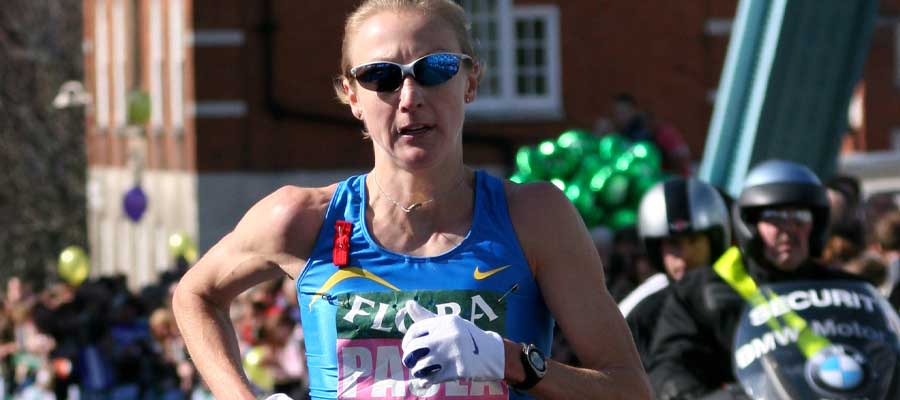
The 2023 TCS London Marathon will be the 20th edition of the race to take place since Paula Radcliffe set her course record of 2:15:25.
The British icon’s performance was a world record at the time, only beaten in 2019 by Brigid Kosgei’s 2:14:04 in Chicago. The mark still stands as the women’s course record in London.
Berlin – where the stars become six stars
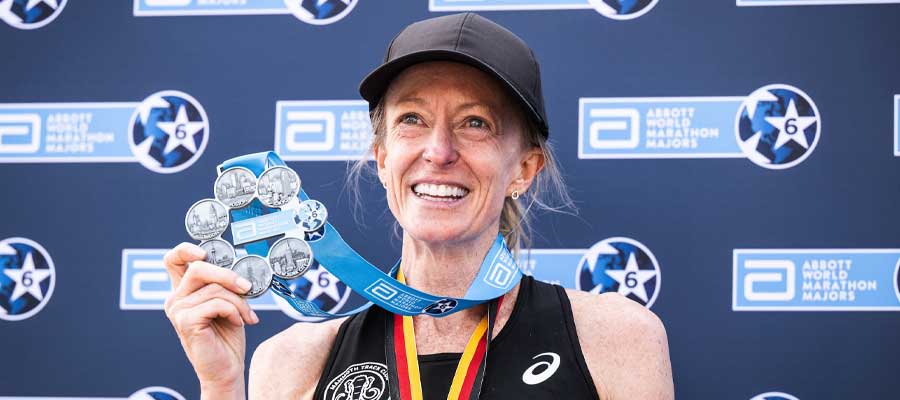
Not only is it the fastest of all six Majors, Berlin also has a habit of providing the stage for some of the world’s greatest female athletes to earn their Six Star medals.
In 2018, Edna Kiplagat received hers there alongside leading American wheelchair racers Tatyana McFadden and Susannah Scaroni.
In 2019 it was where the USA’s Sarah Hall completed her Six Star journey and last year we were able to hang a Six Star medal around former US record holder Deena Kastor’s neck.
45 for 45 in Chicago
The 2023 Bank of America Chicago Marathon will see 45,000 participants start the race to mark the 45th running of the event. The race will also see one participant cross the line as the one-millionth finisher in the event’s history.
DID YOU KNOW?
Rob Simmelkjaer, the new CEO of New York Road Runners, the organisation behind the TCS New York City Marathon, is also a two-time finisher of the event? In 1997 he clocked 3:44:47 and in 2013 he improved to 3:28:24.
First Avenue during race day of the 2022TCS
New York City Marathon is arguably one of the
loudest stretches you'll find on any of the Abbott
World Marathon Majors courses. Nicknamed
Thunder Alley, it comes after the calm and quiet
of the Queensboro Bridge and is always jammed
with spectators on either side.
Photo by Jon Simon for New York Road Runners
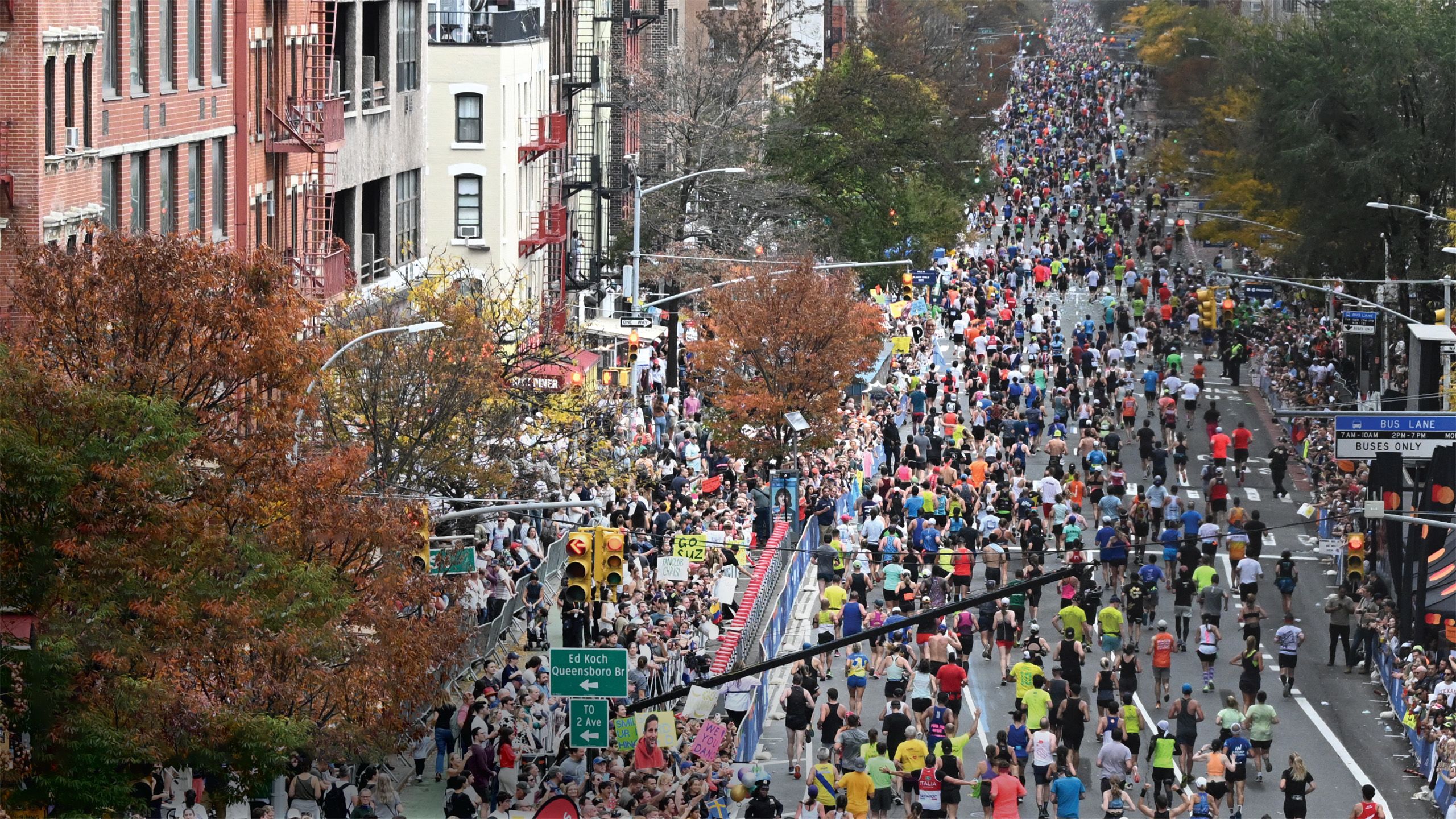
words Dawna Stone
Everyone knows you as the Executive Race Director of the Bank of America Chicago Marathon, but tell us about your own running career.
Growing up I was into sports like football, basketball and baseball. In high school I was introduced to running through my school’s cross-country coach who convinced me to run as conditioning for those other sports. I liked it and had some success. I was lucky that my experience with the sport intersected with the growth of road running in the early 80s.
What was your first experience of mass participation running?
I met Fred Lebow, co-founder of the New York City Marathon, when I was in college. In my opinion he was the one that started all of this. The urban marathon was his vision. He invited me to run in a 10K in Central Park and that’s where I got to know him. He was always very generous with his insight.
My first introduction to the marathon was taking the train from Philadelphia with my classmates to watch New York.
At that time they had 12,000 participants – an unimaginable number of people. Most of my friends would want to go to the finish after seeing the fast guys like Bill Rodgers go by, but I would watch people come over the 59th Street Bridge and it moved me that they were running with no chance of winning, but their connection to the race was the same. They were discovering themselves and the sport.
So how did you progress from runner to race director?
I had the opportunity to watch the Chicago Marathon in the early 80s. I was here the year Greg Meyer won in 1982. Then I saw Steve Jones set the world record in 1984 and Joan Benoit Samuelson’s American record in 1985. I connected with the individuals producing the event and they asked me to help. We had some success which resulted in me being offered the job as the race director.
The course is famous for being flat and fast and has produced numerous world records. How important was that to you?
We’ve never lost sight of the marathon as a competition. We’ve been honored to see some amazing performances by some of the greatest marathoners of all time on the streets of Chicago.
The experience we’ve built honors that tradition. From the location of our start and finish lines in Grant Park to the course, the experience is accommodating to runners.
They don’t have to think about the logistics of the race, so they can focus on their performance.
So, is it built for athletes to go fast? Yes. Is that part of the mindset we have? Yes, and I think people are drawn here as part of it.
More than 30 years on, how have you seen the field of the race evolve since then to today? How has running changed?
When I first started, four or five percent of the field was women. Now women make up almost half of our field. You can point that originally to the success of Joan Benoit Samuelson, Paula Radcliffe and Catherine Ndereba and more recently the performances we’ve seen by Brigid Kosgei, Ruth Chepngetich and Emily Sisson.
Brigid Kosgei breaks the world record in Chicago in 2019
Brigid Kosgei breaks the world record in Chicago in 2019
Their incredible performances have and continue to inspire generations of runners and have led to more women in the sport.
One thing that hasn’t changed is our participant’s commitment to the journey. The marathon is a celebration of humanity and the individuals who commit to it, in many cases, have a life changing experience.
There’s something unique about that because it hasn’t changed. It’s still one foot in front of the other, it’s 26.2 miles farther than you’ve ever run before and in many cases, a commitment that you may have never made before. It’s a beautiful thing.
You were instrumental in founding the Abbott World Marathon Majors. What was the spark behind the idea?
The organizers of the Abbott World Marathon Majors had great relationships and great respect for each other. We realized that we had the same goals and the same challenges and that collectively together we could elevate the sport of marathon running.
We’ve seen the impact of the partnership not only in Chicago, Tokyo, Boston, London, Berlin and New York, but also across the industry. It has been an amazing partnership and a wonderful complement to our industry. The sharing of best practices and friendship is what I’m most proud of.
How does the collaboration help you as a race?
For our staff it’s been incredibly impactful and rewarding. What stands out is the collaboration in response to challenges. In 2013, following the Boston bombings, our first challenges were the security steps we had to take and working out how our world was going to change.
And then navigating the response to COVID and the cancellations and return of our events. It would have been tough if we weren’t together as six. We could exchange information and perspectives and that had a real calming effect.
We were all challenged at the same levels and, while it was stressful, being able to have our medical directors, operations teams and communications leads all talk to and work with each other was significant.
What’s the most memorable year you can remember during your time at the helm?
We had a snowstorm in 1993, when the event was just starting to make its mark. We got six inches of snow and I remember getting up at midnight, looking out the window and it was like Christmas Eve! But the city came together and got the streets cleared. We had some wonderful visuals from above of the city covered in white except for the marathon route that had been cleared and salted.
The way everybody showed up from the city agencies to the volunteers and participants; I think that was where I realized that there was a real connection to this.
Finally, what’s the one thing you do on race morning that perhaps people wouldn’t realize?
There’s a coffee place around the corner from our headquarter hotel that’s open right through the night. So, I’ll go down there early in the morning and get myself a coffee.
From there I’ll walk down State Street to see what the weather is going to be like. I take my jacket off and do a little bit of a personal test so I can say ‘Okay. We’re gonna be good today.’
Rahaf Khatib is a leading light in women’s running. She has made it her mission to break down barriers and overturn traditions to help the cause to give women all over the world a voice.
The stay-at-home mom of three is a certified running coach and was recently appointed to the Governor’s Council for Physical Fitness, Health and Sports in the state of Michigan. MAJORS caught up with the 39-year-old to find out how her running culminated in the Six Star Medal, and the other accomplishments she proudly achieved on her journey.
When did your running begin?
Running began for me after I had my three children. I despised running in high school and would try my hardest to skip class! I signed up for the 10K at my child’s school with zero knowledge about anything running-related. I did it with very little training, but I had the most amazing time and immediately wanted more. I returned the following year for the half marathon, then the marathon the year after.
What are some of your biggest achievements/proudest moments?
I entered a cover contest for Runner’s World magazine and was voted into the top 10, but didn’t make that cover. However, in October of 2016 I landed the cover of Women’s Running magazine and that made headlines as I was the first hijabi (Muslim women who wear hijab) to be on the cover of a running or fitness magazine.
I earned my Six Star Medal in London, 2018 after fundraising for brain cancer in honor of my late father and became the first Syrian to earn this medal. That made my father and community proud given the humanitarian and political circumstances Syrians are facing.
My Boston Marathon was dedicated to Syrian refugees as I raised $16,000 for Syrian Americans who relocated to Michigan. Fundraising for various causes and running go hand in hand for me and that gives a bigger purpose to my running.
It also helps me break so many stereotypes about Muslim women who wear hijab. Prior to my magazine cover and features, there weren’t many positive representations of Muslim women in this sport. I’m proud to have been a catalyst for that change.
When was your first marathon and when did your Majors journey begin?
My first marathon was in Detroit, Michigan in October 2014. I have now run 11. My first Major was Chicago in 2015. I then did Berlin 2016, Boston and New York City in 2017, then Tokyo and London in 2018.
What were your Majors highlights?
My husband ran three of the six with me and we actually crossed the finish line in Berlin hand in hand. That was such a sweet moment for us. He also surprised me by flying out to London in 2018 for 24 hours to see me earn my Six Star medal.
How did you feel when you completed your Six Star journey?
At the beginning I was filled with excitement at such an adventurous and physically challenging journey - not to mention knowing that I would be making history.
But things took a turn after Boston when my father suddenly fell ill. I wanted the Six Star medal more than ever so that I could show him before he passed. I ran London as my last Major in 2018 and he passed away in January of 2019. It felt bittersweet to have done this while he was with us, and he was so proud of me.
How do you think your success has influenced others?
The whole reason for my Instagram @runlikeahijabi is to offer a positive outlook on Muslim hijabi runners, as well as stay-at-home moms who want to prove something
to themselves.
I wanted my children to see my accomplishments and for them to be proud.
I also wanted fitness brands to feature someone who looks like me more in adverts and media as it feels like we have been ignored for far too long! I also wanted my fundraising and writing to be counted as good deeds in my life.
Who do you draw your inspiration from?
My drive comes from within. I never grew up playing sports or seeing someone who looked like me doing what I do now.
My drive comes from my family and the thought of showing younger Muslim hijabi girls and women that holding on to your faith and goals is what counts. That’s what I believe really will get you to any finish line in life.
What’s the best advice you’ve been given that has helped your running?
To take it slow, except on speed workout days, and never ever compare yourself to others. Find a purpose other than ‘numbers’ (pace, mileage, totals), focus on yourself and what drives you and listen to your body. Take charge of your running, and never let running ‘run’ you.
What’s the best change you’ve seen in the sport?
I think seeing all the diversity now in this sport has been refreshing. Also, the body positivity movement – showing that all bodies can run any distance – is also going in the right direction!
Follow Rahaf @runlikeahijabi
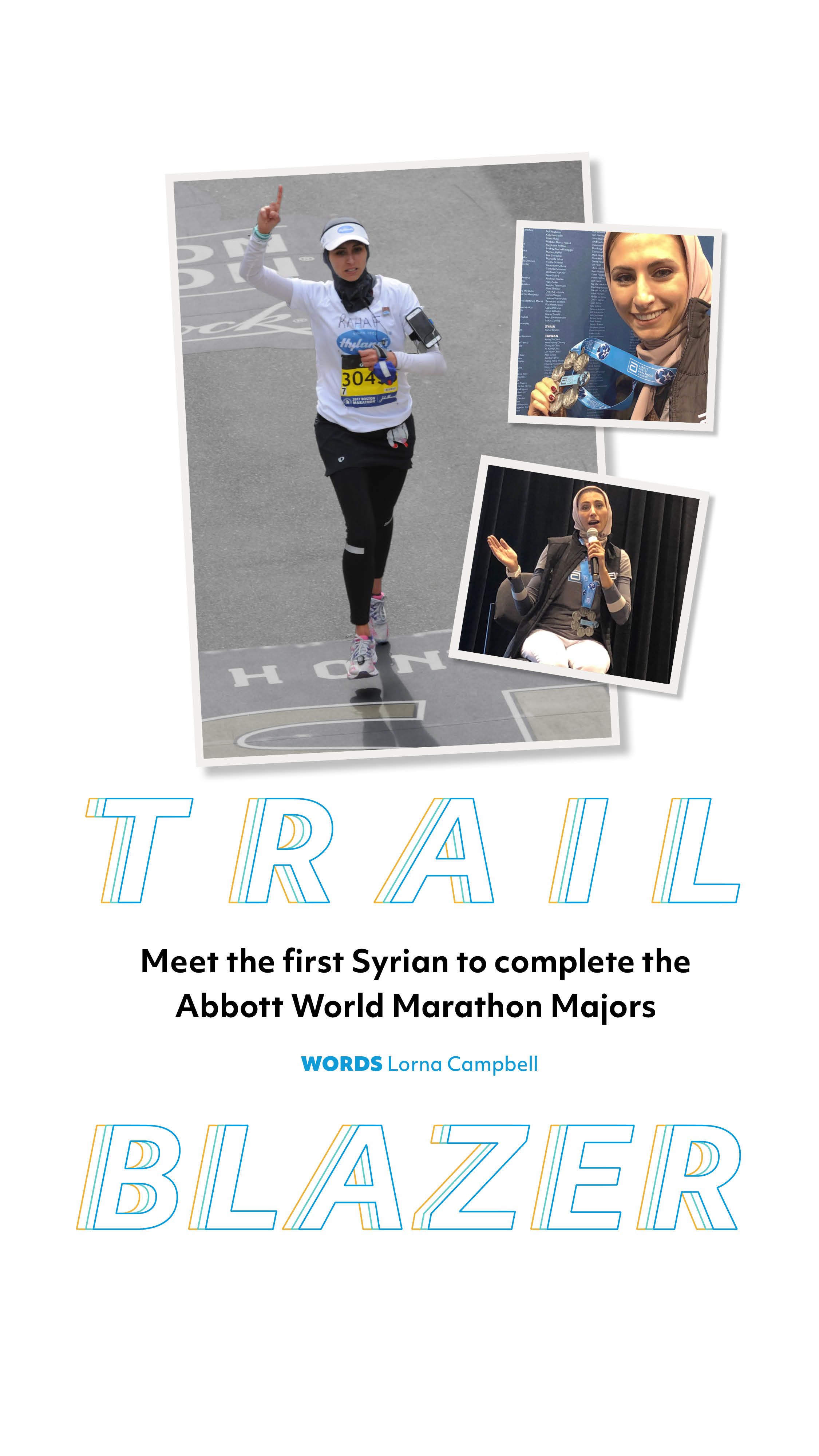
Rahaf Khatib is a leading light in women’s running. She has made it her mission to break down barriers and overturn traditions to help the cause to give women all over the world a voice.
The stay-at-home mom of three is a certified running coach and was recently appointed to the Governor’s Council for Physical Fitness, Health and Sports in the state of Michigan. MAJORS caught up with the 39-year-old to find out how her running culminated in the Six Star Medal, and the other accomplishments she proudly achieved on her journey.
When did your running begin?
Running began for me after I had my three children. I despised running in high school and would try my hardest to skip class! I signed up for the 10K at my child’s school with zero knowledge about anything running-related. I did it with very little training, but I had the most amazing time and immediately
wanted more. I returned the following year for the half marathon, then the marathon the year after.
What are some of your biggest achievements/proudest moments?
I entered a cover contest for Runner’s World magazine and was voted into the top 10, but didn’t make that cover. However, in October of 2016 I landed the cover of Women’s Running magazine and that made headlines as I was the first hijabi (Muslim women who wear hijab) to be on the cover of a running or fitness magazine.
I earned my Six Star Medal in London, 2018 after fundraising for brain cancer in honor of my late father and became the first Syrian to earn this medal. That made my father and community proud given the humanitarian and political circumstances Syrians
are facing.
My Boston Marathon was dedicated to Syrian refugees as I raised $16,000 for Syrian Americans who relocated to Michigan. Fundraising for various causes and running go hand in hand for me and that gives a bigger purpose to my running.
It also helps me break so many stereotypes about Muslim women who wear hijab. Prior to my magazine cover and features, there weren't many positive representations of Muslim women in this sport. I’m proud to have been a catalyst for that change.
When was your first marathon and when did your Majors journey begin?
My first marathon was in Detroit, Michigan in October 2014. I have now run 11. My first Major was Chicago in 2015. I then did Berlin 2016, Boston and New York City in 2017, then Tokyo and London in 2018.
What were your Majors highlights?
My husband ran three of the six with me and we actually crossed the finish line in Berlin hand in hand. That was such a sweet moment for us. He also surprised me by flying out to London in 2018 for 24 hours to see me earn my Six Star medal.
How did you feel when you completed your Six Star journey?
At the beginning I was filled with excitement at such an adventurous and physically challenging journey - not to mention knowing that I would be making history.
But things took a turn after Boston when my father suddenly fell ill. I wanted the Six Star medal more than ever so that I could show him before he passed. I ran London as my last Major in 2018 and he passed away in January of 2019. It felt bittersweet to have done this while he was with us, and he was so proud of me.
How do you think your success has influenced others?
The whole reason for my Instagram @runlikeahijabi is to offer a positive outlook on Muslim hijabi runners, as well as stay-at-home moms who want to prove something to themselves.
I wanted my children to see my accomplishments and for them to be proud.
I also wanted fitness brands to feature someone who looks like me more in adverts and media as it feels like we have been ignored for far too long! I also wanted my fundraising and writing to be counted as good deeds in my life.
Who do you draw your inspiration from?
My drive comes from within. I never grew up playing sports or seeing someone who looked like me doing what I do now.
My drive comes from my family and the thought of showing younger Muslim hijabi girls and women that holding on to your faith and goals is what counts. That’s what I believe really will get you to any finish line in life.
What’s the best advice you’ve been given that has helped your running?
To take it slow, except on speed workout days, and never ever compare yourself to others. Find a purpose other than ‘numbers’ (pace, mileage, totals), focus on yourself and what drives you and listen to your body. Take charge of your running, and never let running ‘run’ you.
What’s the best change you’ve seen in the sport?
I think seeing all the diversity now in this sport has been refreshing. Also, the body positivity movement – showing that all bodies can run any distance – is also going in the right direction!
Follow Rahaf @runlikeahijabi
2013
Hamburg
1st 2:05:30
After roaring into 2013 with a win at the Barcelona Half Marathon in one hour and four seconds, Kipchoge sets a course record in his first outing over 26.2-miles.
Berlin
2nd 2:04:05
Wilson Kipsang defeats Kipchoge in the German capital with a world record of 2:03:32. Kipchoge’s time becomes the fifth-fastest mark in the history of the men’s marathon.
2014
Rotterdam
1st 2:05:00
High winds and the early departure of some of his pacemakers cannot stop Kipchoge claiming his second marathon win.
Chicago
1st 2:04:11
His first Major victory comes against the great Kenenisa Bekele, Kipchoge’s trademark grin spreading across his face in the final mile.
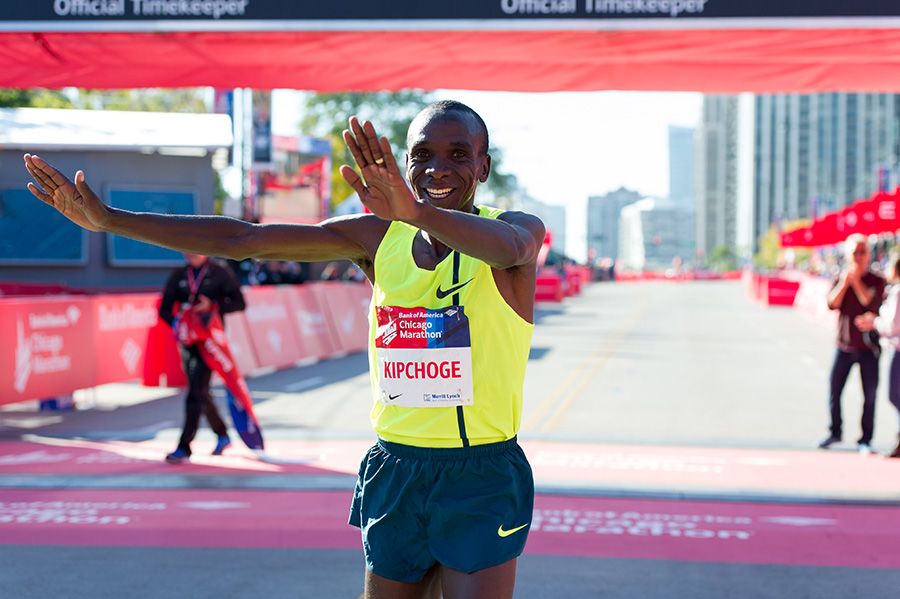
2015
London
1st 2:04:42
The race billed as a fight between Kipsang and Dennis Kimetto, the two fastest men in history, is snatched by Kipchoge, winning on his London debut by five seconds.
Berlin
1st 2:04:00
Kipchoge’s insoles famously come loose, flapping about like wings out of the back of his shoes as he claims his first Berlin crown. “It was not easy,” he says afterwards. “There are blisters on the left foot and my big toe is cut, with lots of blood.” The footwear mishap puts paid to any hopes of breaking the world record, but finishing 81 seconds ahead of his nearest rival underlines Kipchoge’s quality.
2016
London 1st
2:03:05
Kipchoge retains his London crown in the second fastest time in history, missing Kimetto’s world record by eight seconds.
Rio Olympics
1st 2:08:44
The rain in Rio cannot stop him from dominating the field to become Olympic champion in the shadow of the iconic Sambadrome.
2017
Breaking2,
Monza 2:00:25
In a break from the Majors circuit, Kipchoge partakes in an experiment to try and break the two-hour barrier around the Monza race track in Italy, falling short, but running faster over 26.2 miles than anyone has ever seen before.
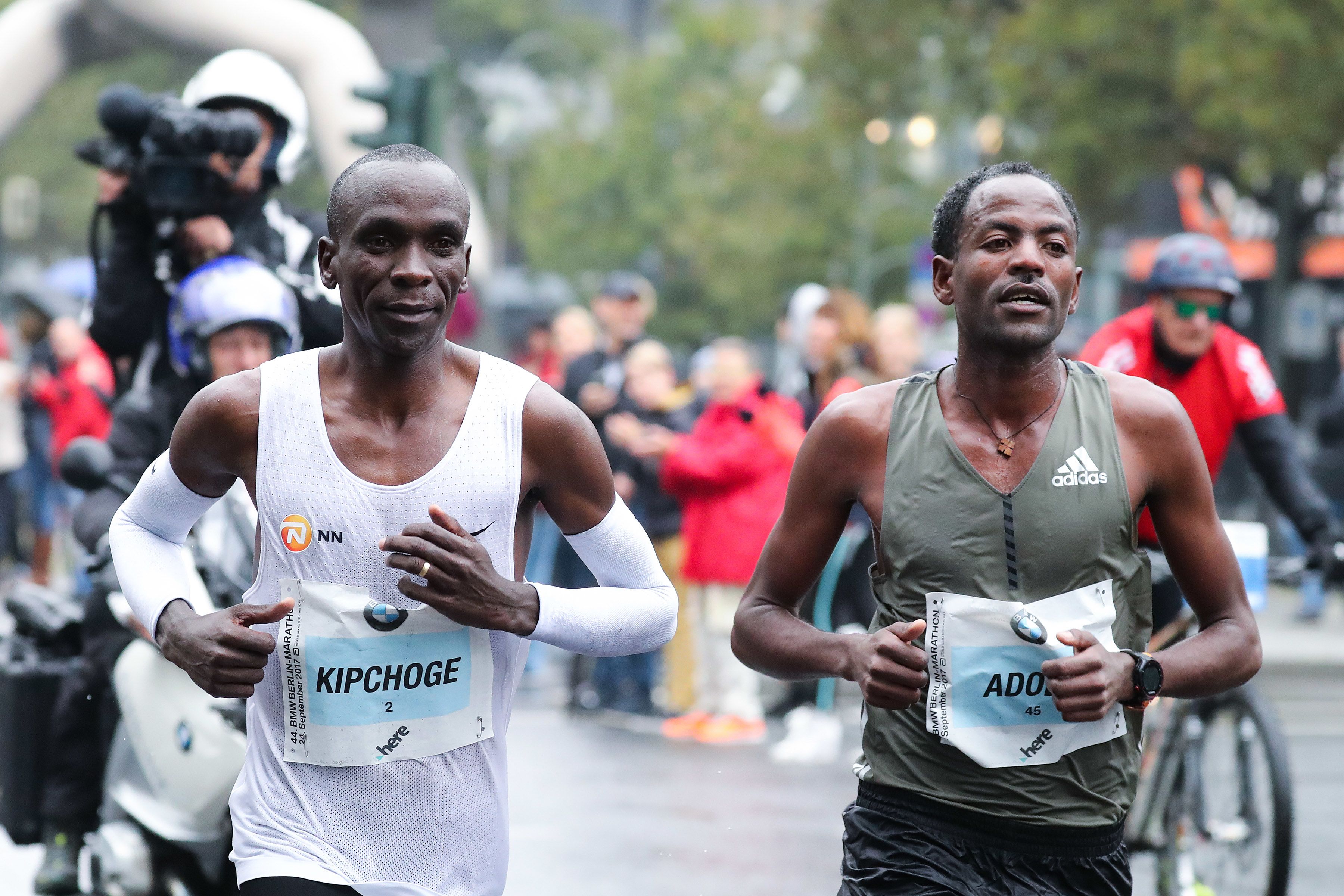
Berlin
1st 2:03:32
Wet weather and defiant opposition from the unheralded Ethiopian Guye Adola present a new challenge in Berlin, but Kipchoge – footwear intact – eases away in the final 5km to cement his status as world No. 1 with an assured victory.
2018
London 1st
2:04:17
Searing heat in London puts paid to hopes of a new course record, but Kipchoge proves untouchable.
Berlin 1st
2:01:39
At last, the official world record is his. The first man in history to break 2:02:00 in a world record-eligible race.
2019
INEOS 1:59 Challenge
(Vienna) 1:59:40
In optimal conditions and with a phalanx of interchangeable pacemakers, Kipchoge lives up to his credo that no human is limited, and removes the two hour barrier in controlled conditions.
London 1st
2:02:37
Kipchoge puts on a masterclass of patience, separating from the pack in the final 2km to shatter his own course record, becoming the first man to win four London crowns.
2020
London 8th
2:06:49
A pandemic-hit season sees the marathon calendar decimated. London is able take place behind closed doors on a looped course on a dark, soaking day.
Kipchoge, beset with an ear problem, cannot make it five titles in the UK capital. The defending champion can only finish eighth as Ethiopia’s Shura Kitata sprints to victory along a deserted Mall.
2021
NN Mission Marathon
(Enschede) 1st 2:04:30
A specially-arranged race on an airfield in the Netherlands presents a chance for Olympic qualification and sees Kipchoge return to winning ways.
Tokyo Olympics 1st
2:08:38
Punishing heat on the streets of Sapporo for the delayed 2020 Games marathon cannot stop the great man becoming a two-time Olympic champion over 26.2 miles.
2022
Tokyo 1st
2:02:40
Kipchoge returns to Japan and demolishes the Tokyo course record to earn his fourth AbbottWMM star. His stated aim: to be the first able-bodied man to win all six Abbott World Marathon Majors.
Berlin 1st
2:01:09
Another eye-watering performance sees the world record re-written once again. At the end of the year, Kipchoge becomes AbbottWMM series champion for an unequalled fifth time.
THE
POWER
OF
POSITIVITY
How Susannah Scaroni returned from a broken back
to win the Abbott World Marathon Majors title
WORDS Danny Coyle IMAGE London Marathon Events
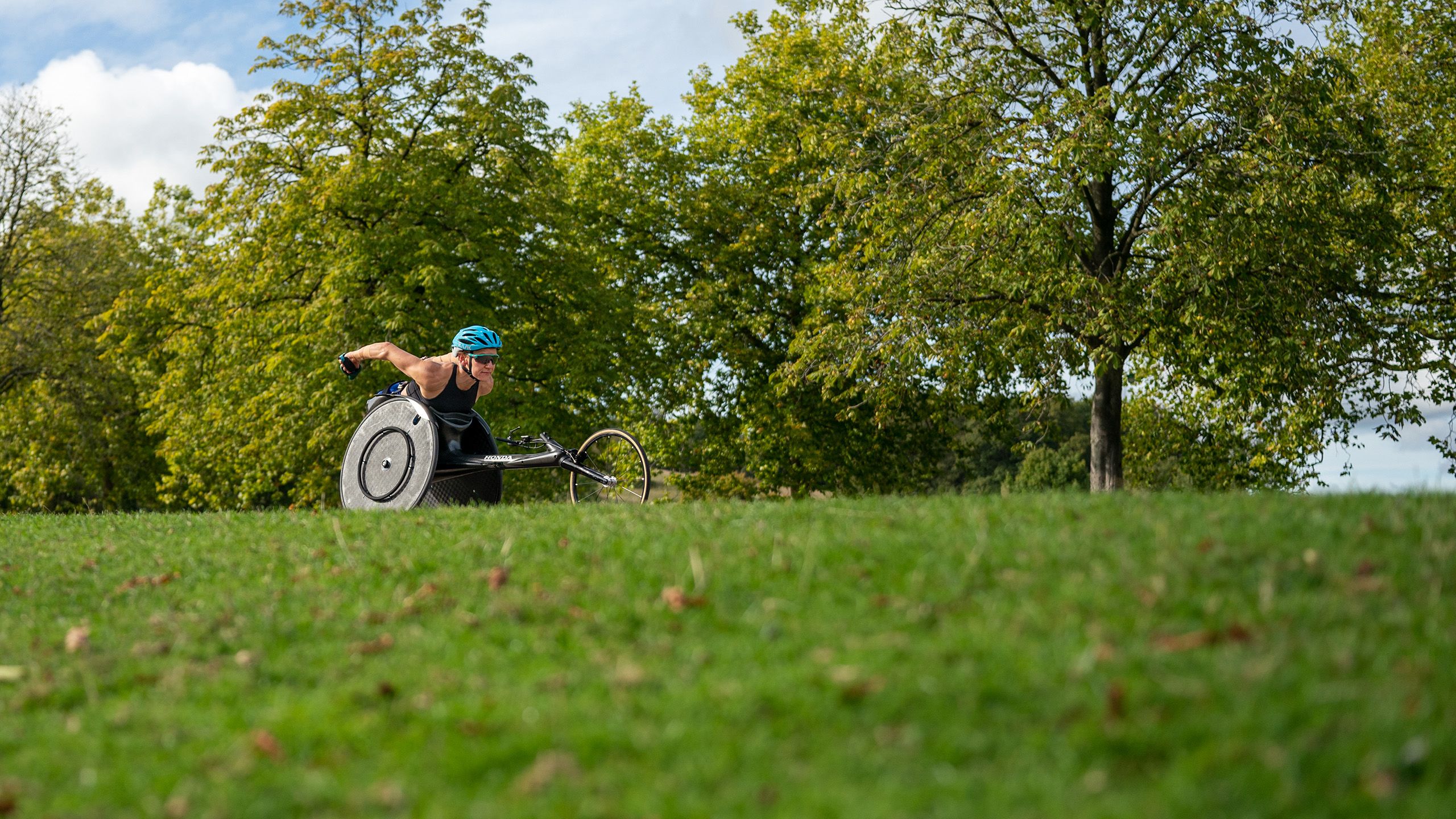
Susannah Scaroni’s list of achievements in the past two years is as impressive as they come.
It includes Paralympic gold, record-setting performances and a first AbbottWMM wheelchair series title.
What that list doesn’t tell you is that sandwiched in between all the podiums and prize money is a moment that could have inserted a premature, final full-stop into the story of her athletic career. Perhaps even her life.
It came on September 16, 2021 as she was recalibrating her training regime to switch from her Paralympic program into what was to be an unprecedented six-week period featuring five AbbottWMM races, thanks to a pandemic-blighted calendar.
The 31-year-old, originally from the small rural farming comunity of Tekoa in the eastern part of the state of Washington, was on a training session on the roads near her training base at the University of Illinois in Champaign.
Watching the wheelchair athletes navigate those roads is a white-knuckle experience in itself.
Streets are shared with regular traffic, a small flag mounted on a tall, thin mast affixed to the back of a racing chair the only signifier that, down near ground level there’s someone else using the tarmac.
On that day, the flag proved to be insufficient for Scaroni when a vehicle slammed into the back of her racing chair. Her memory of the incident is still patchy.
“All of a sudden, I noticed I was moving forwards really fast. And I just knew, ‘this is not going to be good’,” she says.
“I do kind of remember lifting my hand up and then being on the roadside out of my chair.
“There was a car stopped ahead and I could see someone coming towards me. Whatever else happened; whichever way I might have twisted, or how I twisted, I don’t have any memory of that.”
The incident caused three fractured vertebrae including a T8 vertebral burst fracture, as well as arm and leg injuries and a destroyed chair.
Weeks of recovery and rehab followed, with help from her mom and soon-to-be husband Jacob to do just about everything for her as she began the healing process.
Was there doubt she would make it back into a racing chair?
“To me, there definitely was. I injured my back, which to me was very serious. I just wanted to have a full back recovery and not have to deal with chronic back pain or problems.”
It was also not the first time a life-changing trauma had befallen Scaroni.
“All of a sudden, I noticed I was moving forwards really fast. And I just knew, ‘this is not going to be good’”
FACING ADVERSITY
Her father had passed away with a brain tumor when she was an infant and, at age five, a car accident involving a patch of ice and a collision with an oncoming truck left her with injuries that meant she would need a wheelchair for the rest of her life.
The simple fact of being alive after her latest adversity gave her all the gratitude she needed.
“It’s one of those things that sounds cliche. You’re not asking for these things to happen to you, but sometimes they can really be a catalyst for goodness.”
There was plenty of goodness to come. When she did return to her chair – handed over by former teammate Amanda McGrory – the form she had shown at the Games in Tokyo (where she won 5,000m gold and 800m bronze) had not deserted her, despite her back still being far from 100%.
“Thirty minutes into training I could barely keep myself off my lap because of my back.
“I now have four pieces of foam in my racing chair underneath my knees. It shortens that distance that my back actually has to hold me up. I kept adding more until I felt like I could be at any tolerance.
“I remember when I could tolerate an hour and thinking, ‘this is great, it’s starting to feel more normal’.”
Second place in Boston in 2022, her Majors comeback, got her onto the Series XIV leaderboard before a summer of impressive performances over shorter distances underlined that she was back to
her best.
Victory at the Mastercard Mini 10K in New York in a world best 21:10 was followed by a new 5,000m world record on the track and victory at Grandma’s Marathon in Minnesota in a world best 1:27:31.
She then broke the course record at the Peachtree Road Race 10k in Atlanta with 21:14.
When Majors season resumed in September with three races in three weekends, it would be the ultimate test of her reconditioned body, as well as
her time management skills as she worked to complete her master's degree in nutrition science and kinesiology.
In Berlin, she placed third behind three-time series champion Manuela Schär and the surprise winner Catherine Debrunner, and improved by one place seven days later in London, again behind Debrunner.
VICTORY AT LAST
Chicago was next, where she recorded her long-awaited first Majors win. All that then stood between her and the series title was the uncompromising TCS New York City Marathon course.
Scaroni bent the five boroughs to her will in dominant fashion, disappearing over the Verrazano Bridge and leaving the chasing pack with an impossible task.
Tatyana McFadden’s seven-year-old course record was vanquished by 21 seconds and a new name joined the list of AbbottWMM women's wheelchair series winners.
“Berlin showed that Catherine and Manuela were faster than me and then neither of them were in Chicago, so it didn’t feel satisfying,” says Scaroni.
“But in New York we had more strength in the field that day. And to get the course record makes me
feel like ‘Okay, this is a time many people have tried
to get. It means more.’ New York was what I was looking for.”
It came with the reward of $150,000 in prize money thanks to the victory purse combined with breaking the course record and wining the series.
It’s an astonishing sum that underlines the growth of wheelchair marathon racing.
Given the dizzying speed with which it has all happened, you could forgive her for struggling to take it all in, but perspective is not something she lacks given the difficulties she has faced,
“My mom’s very spiritual and that was the cornerstone of our life growing up. I latched on to that and so did my older sister. I was from a very faith-based community so I was immersed in it and saw it as a positive.
“I know, for some people, it doesn’t feel that way, but it was really everything I think I needed. It was just an unshaking hope that I always had.”
“The way I see it is a kind of light, and in any sort of darkness you can’t really quench the light.
“I think about that when things are hard. That would be something that would never be gone from me.”
Southern Comfort
If you’re emerging from winter’s icy grip or just in the mood for some travel,
the Age Group World Rankings offer some stunning, sunny locations in the south of Europe
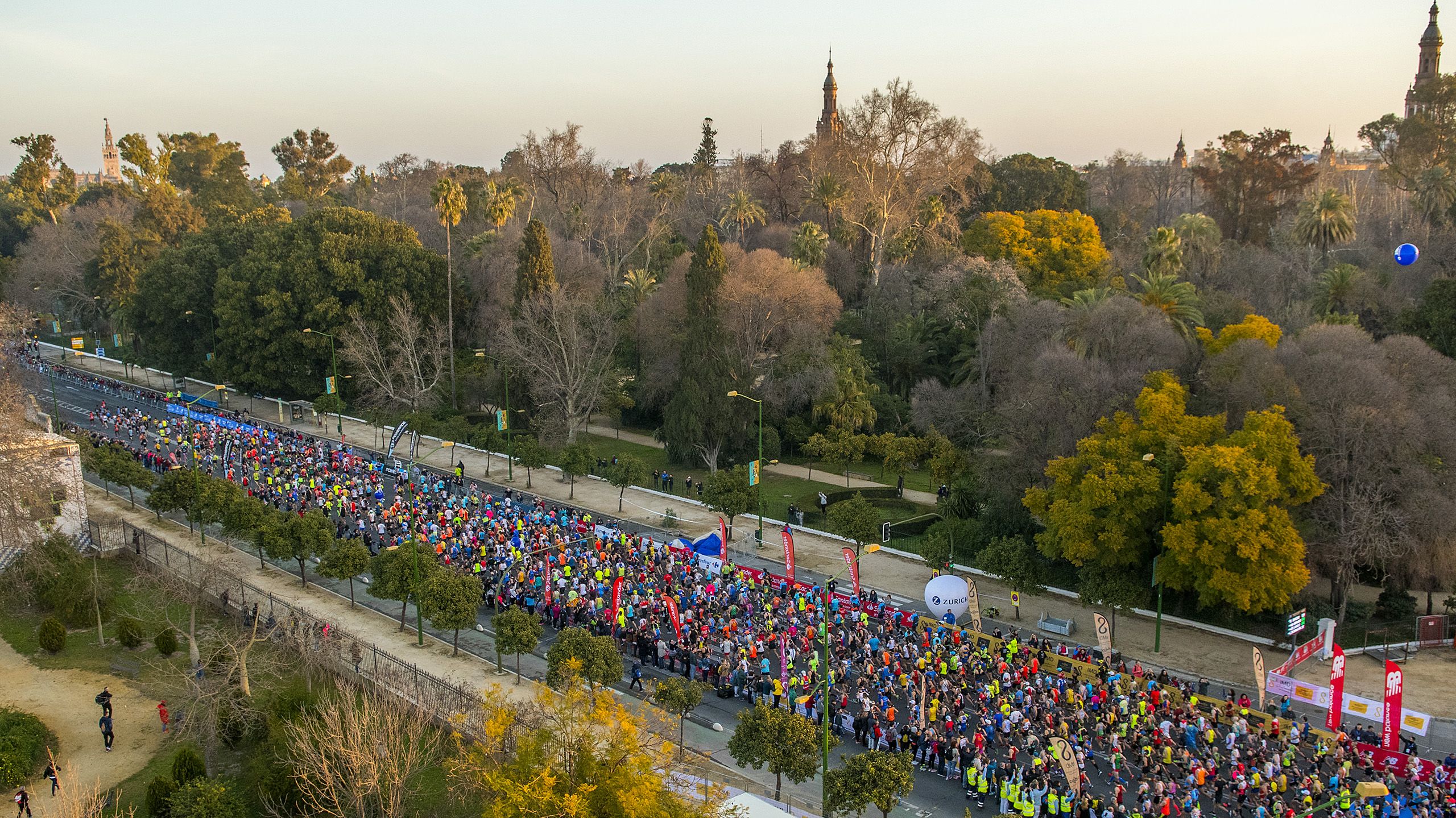
Funchal Marathon
January 22 - Madeira, Portugal
For the first European Age Group World Championship Qualifier of 2023, we find ourselves on the Atlantic island of Madeira for the Maratona De Funchal. 1,300 participants take on a course that leads out from the city before looping back along the coast, taking in the local sights including the Cristiano Ronaldo Museum, before crossing the finish line in front of Empresa de Eletricidade da Madeira.
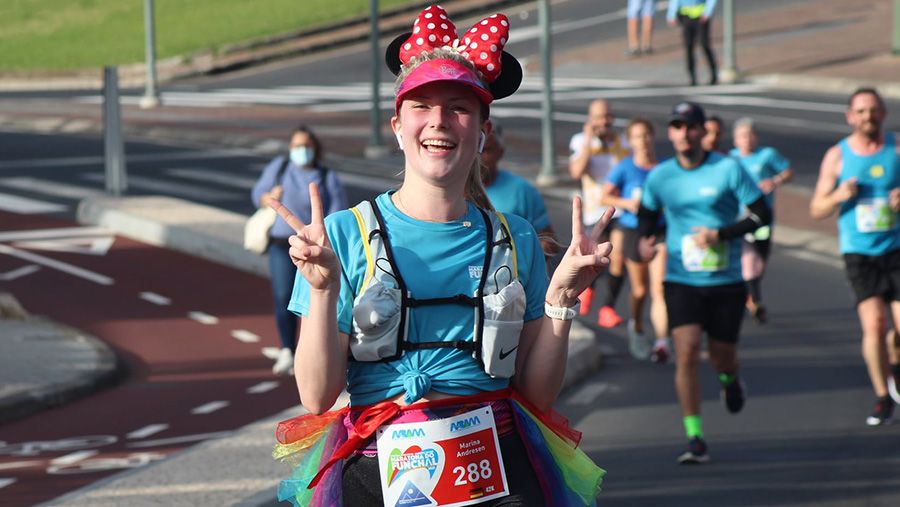
Maratona di San Valentino February 19 - Terni, Italy
If you love running, then the Maratona di San Valentino will steal your heart!
Valnerina is set in the green heart of Umbria, the home of Italian fresh produce, and the location for this wonderful marathon that takes place every year around the St. Valentine celebrations the area is famous for. The route is littered with historical wonders along with the stunning Cascata delle Marmore or Marmore Falls, a man-made waterfall created by the ancient Romans.
At 165m it’s the tallest man-made waterfall in the world. It’s a tough course, featuring a consistent incline before you cross the finish line at the Piazza Republica in the town of Terni.
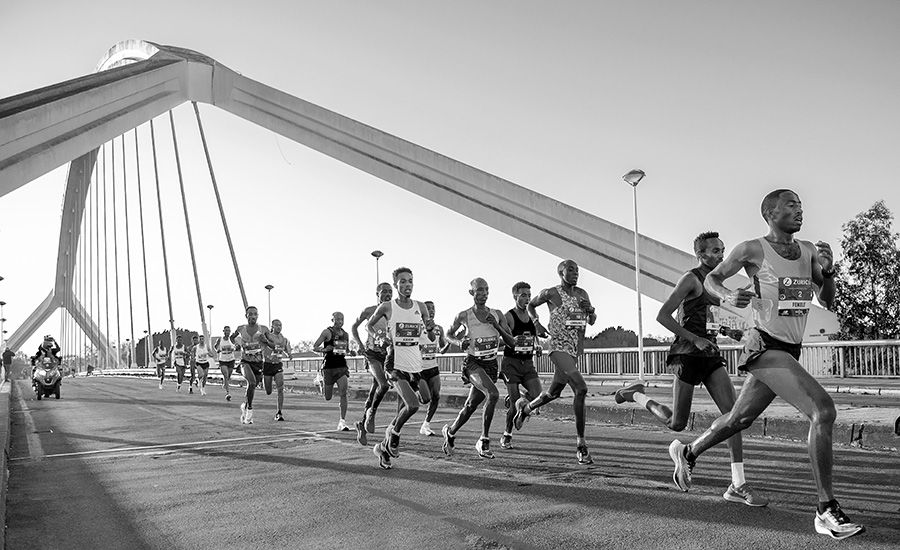
Zurich Seville Maraton
February 19 - Seville, Spain
Seville’s course, one of the flattest in Europe, starts and finishes in the Olympic Stadium, on La Cartuja Island, and it takes runners though the streets of the Andalusian capital and along the banks of the Guadalquivir River.
Last year’s winner, Asrar Abderehman, crossed the finish line in a time of 2:04:43, breaking the course record set the previous year by his Ethiopian compatriat Mekuant Ayenew, and taking almost three minutes off his own personal best. And to show that his effort was no fluke, Alemu Megertu took more than four minutes off the women’s record earlier in the day! Suffice to say: this course is quick.
Maratón BP Castellón
February 27 - Castellon, Spain
Winding through the city streets of Castellon on the shores of the Mediterranean, the Maraton BP Castellon sees 5,000 athletes compete for the top prize.
Having recently been awarded a bronze label by World Athletics, this race goes from strength to strength, attracting a wider elite field due to its elevation, location and climate at this time of the year. It’s also easily accessible from a number of airports.
Split Marathon
February 26 - Split, Croatia
Taking place within the boundaries of one of the most beautiful cities in Europe, the Split Marathon begins and ends in the Riva harbour.
The course takes in most of this grand city, with live music dotted around the route and real enthusiasm from the locals who come out to cheer you across the finish line. Split is renowned as being one of the most lively and entertaining cities in all of Europe.
OPAP Limassol Marathon GSO
March 19 - Limassol, Cyprus
Cyprus’ premier running event follows the south Mediterranean coast line towards the Kolossi Castle, once home to Richard The Lionheart, before turning for home. It offers runners a chance to gain some warm weather training, and is the perfect opportunity to get in one of your last training runs in before heading to Boston or London.
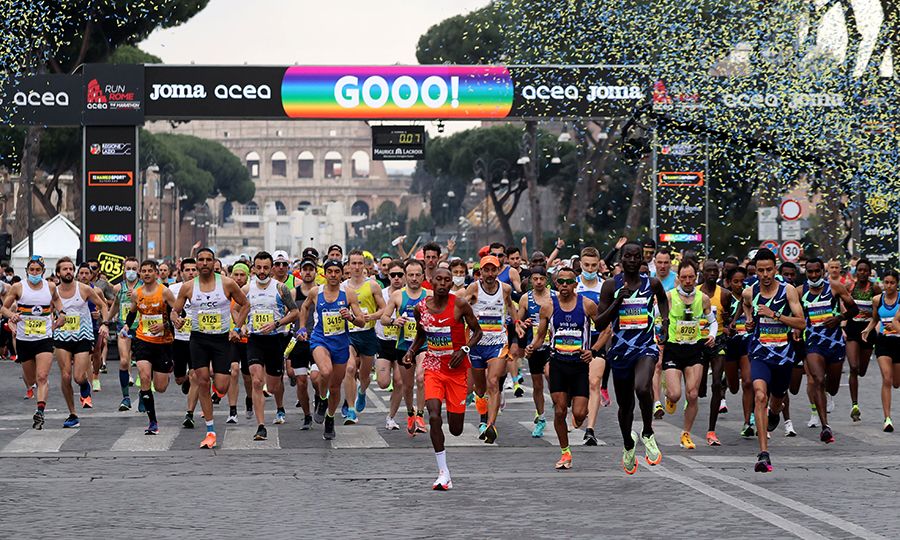
Acea Run Rome the Marathon
March 19 - Rome, Italy
The 38th edition of the Rome Marathon will see an estimated 9,000 runners take to the streets of the Eternal City.
The course takes in cobblestones laid over 2,000 years ago and passes many of the city’s most famous sights. Starting at the Via dei Fori Imperiali in the shadow of the Coliseum, the course winds around the River Tiber and is renowned as one of the most inspiring and challenging races of the AbbottWMM Wanda Age Group World Championships Spring qualifiers.
There are over 350 qualifying races in the 2023 AbbottWMM Wanda Age Group World Rankings. Find out more at:
worldmarathonmajors.com/rankings
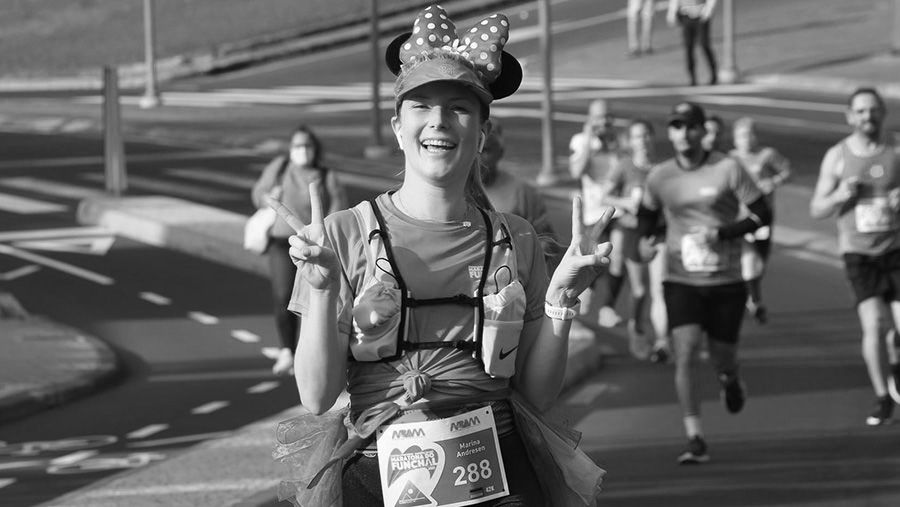

ENDURANCE GENE
Meet the man who became 70-74
Age Group World Champion in 2022
WORDS Lorna Campbell
When Gene Dykes was in London last October he couldn’t walk more than a few meters in the race hotel lobby without being stopped and asked for
a photograph.
This tall, unassuming figure from Canton, Ohio, USA, has appeared in countless magazine articles and even featured alongside Eliud Kipchoge on the Abbott World Marathon Majors expo wall.
The reason: he has racked up records and wins at
an incredible rate as he has advanced through the age groups.
He enhanced his reputation further when he won
the 70-74 AbbottWMM Wanda Age Group title in 2022. For such a decorated runner, the sport did not come easy.
“I thought I was good at it, but at college I discovered I was a pitiful mid-distance runner,” he says. “So I taught myself to do triple jump and hurdles to be useful to the team.
“As I entered adulthood, I saved my competitive instincts for sports I was good at - golf and bowling. I kept jogging but didn’t really begin running in earnest until age 57.”
Over the last 17 years he’s swapped his birdies and strikes for countless honors in marathons and further.
In 2018, he was national champion in the 100-mile trail and the 1,500m track event and has won his age category at the Boston Marathon for four consecutive years.
He was the oldest person alive in 2018 to run a sub-three-hour marathon. He did it three times in Rotterdam, Toronto and Jacksonville then again at the 2019 Boston Marathon.
Dykes can also turn his hand to ultra-distances, finishing the Triple Crown of 200s at age 69 (Bigfoot 200 in August, Tahoe 200 in September, and the Moab 240 in October).
Last December he took his tally to 77 marathons and 75 ultra-marathons. That is a lot of mileage since his first 26.2miles in New York City in 2006.
All of which begs two key question: Why does he do it, and how has he done it for so long?
“It’s so much fun, he says. “I love the competition, I love the travel that comes with a lot of my races and I love the social circle I have because of it.
“It’s a tough sell but, in my opinion, if you want to run well as you age, the best chance would be not to race until you get older.
“It’s been said that no matter when you start you only get 15 good years of running. I’m in my 16th year now, and I feel a lot less capable this year.
“It felt like how I imagine a winner of a lifetime achievement award must feel.”
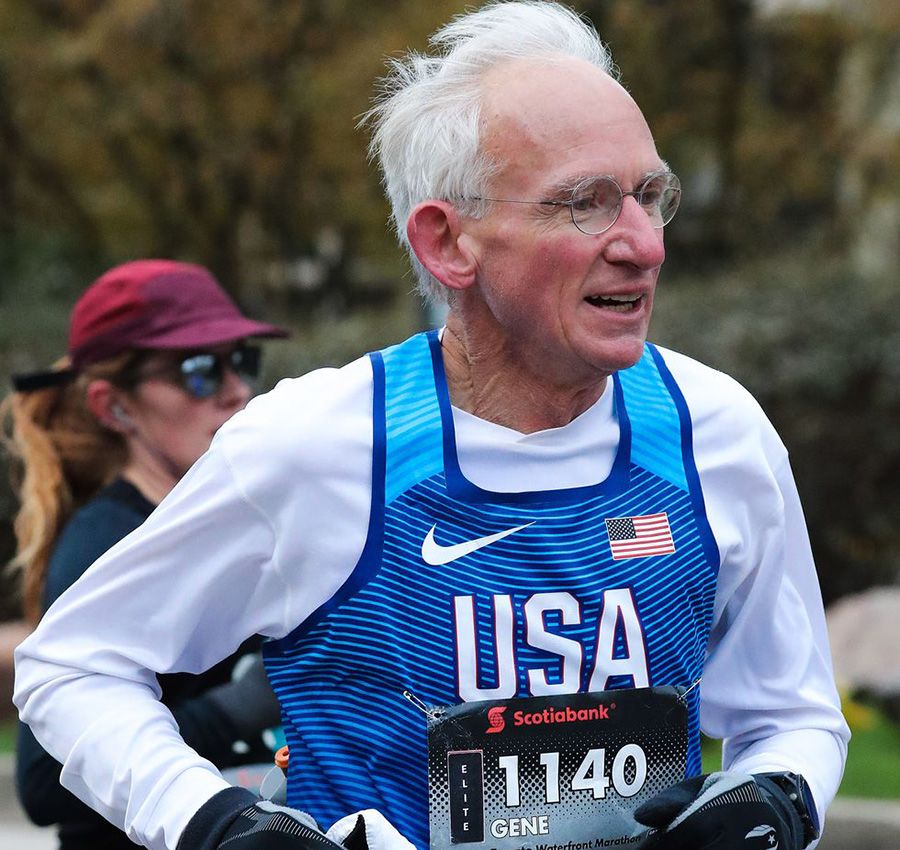
TAKING IT EASY
“For anybody who is already worn out from racing a lot, it’s my belief that a ‘reset’ can be achieved by taking a significant amount of time off from hard running. Nothing wrong with jogging and keeping it easy.”
When Dykes stepped on stage to pick up his Age Group World Champion award in London from Kipchoge, the reception was rapturous. “It was a bit humbling, the congratulations I received,” he says. “It felt like how I imagine a winner of a lifetime achievement award must feel, but it’s certainly nice to know that I’ve inspired so many runners.”
And the competitive shoes will not be hung up just yet.
“I’ll be there in Chicago [for the 2023 Age Group World Championships]. I hope to give my coach eight to 10 weeks to train me – and no crazy ultras during that time. I have the Berlin a month earlier, but four weeks is plenty of time to rest up from that.
“From a competitive standpoint, Ed Whitlock (the first person over 70 to break three hours) set the bar so high that many thought his records were unbeatable.
“I’m just the leading edge of a tidal wave of talented age groupers who now know that his record – and certainly any of mine – are well in play.”
And his love of running – and proficiency in it – has passed down the line. Both his daughters have run marathons and his eldest has won several ultras. “I have a grandchild from each of my daughters. They are not runners…yet!”
CONTENDERS READY
Find out more about the new races in the candidacy process to join the Abbott World Marathon Majors
The Abbott World Marathon Majors now has three candidate races being assessed to join this exclusive club of the world’s greatest marathons.
The candidacy program involves a multi-year assessment process against a comprehensive list of criteria that each race must achieve before they can become part of the AbbottWMM series.
In 2019, the Chengdu Marathon in China was brought into the process and is now joined by the Sanlam Cape Town Marathon and the Blackmores Sydney Marathon, who both underwent their first year of assessment last year.
Cape Town was officially named as a candidate race in August 2021, becoming the first marathon on the continent of Africa to join the process.
“We have always believed that the Sanlam Cape Town Marathon could be Africa’s first Abbott World Marathon Major, so becoming a candidate race is a tremendous honor”, said Sanlam Cape Town Marathon Chairman and former Rugby World Cup-winning captain, Francois Pienaar.
“Becoming an Abbott World Marathon Major would be like hosting a world championship event every single year, and achieving this status would be a tremendous boost for the city, country and continent.
“Africa is home to the best marathon runners in the world and we hope they will get the opportunity to run an Abbott World Marathon Major on home turf in the coming years.”
The addition of Sydney to the process in 2022 now means that each candidate represents a new region of the world for a potential Abbott World Marathon Major, and Sydney race director Wayne Larden is confident his city can stand shoulder to shoulder with the current Majors locations.
“We have always believed that the Blackmores Sydney Marathon has what it takes to be an Abbott World Marathon Major, so becoming one of only three candidate races is a tremendous honor.
“The Sydney Marathon is part of Australia’s largest running festival, the Sydney Running Festival, attracting thousands of participants to run across the iconic Sydney Harbour Bridge and finish under the sails of the Sydney Opera House each year.
“We can now take a huge leap forward and become one of the most iconic running events in the world and achieving this status would be a tremendous boost for Sydney and Australia.”
Click to find out more about the three candidate races
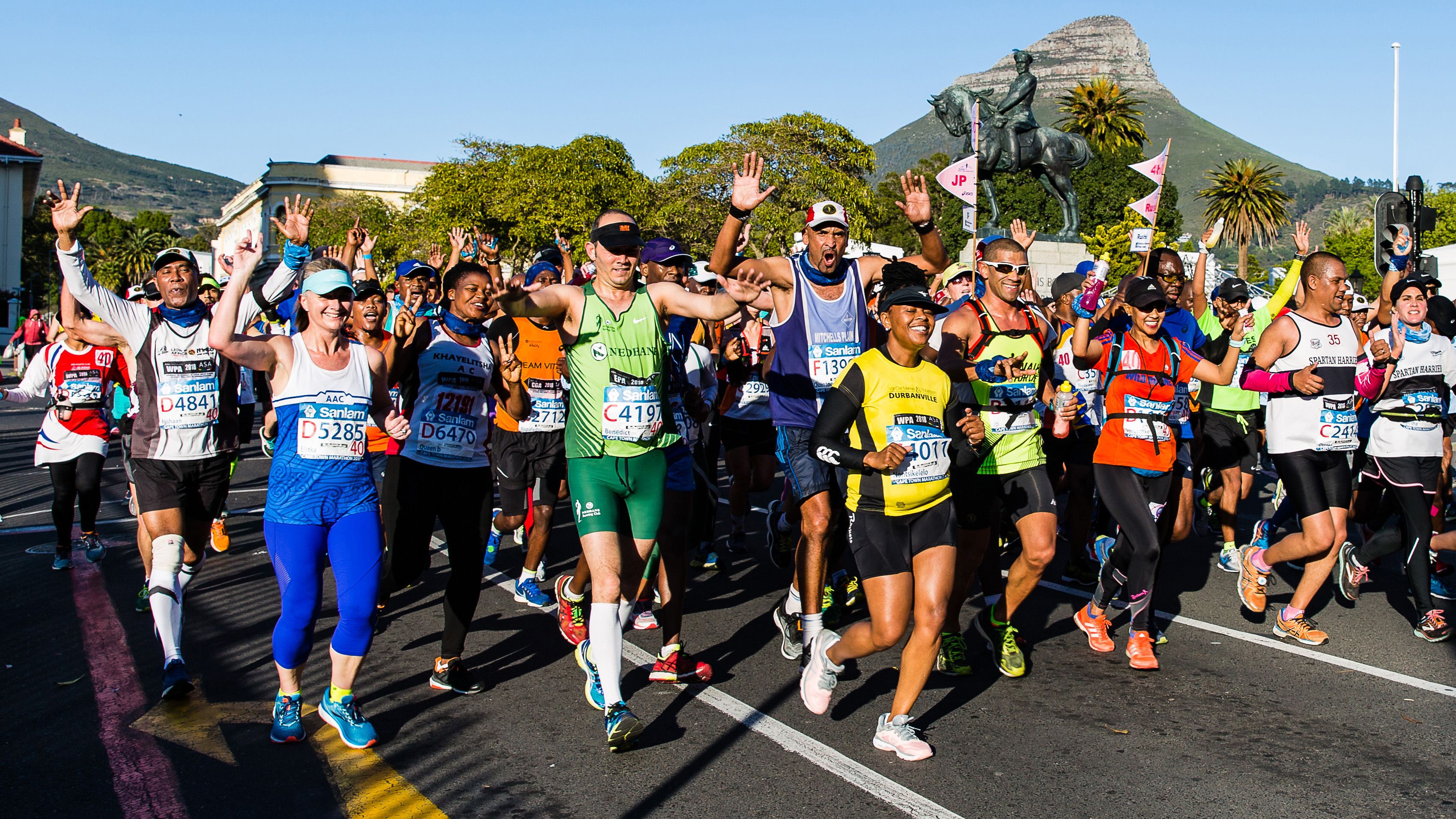
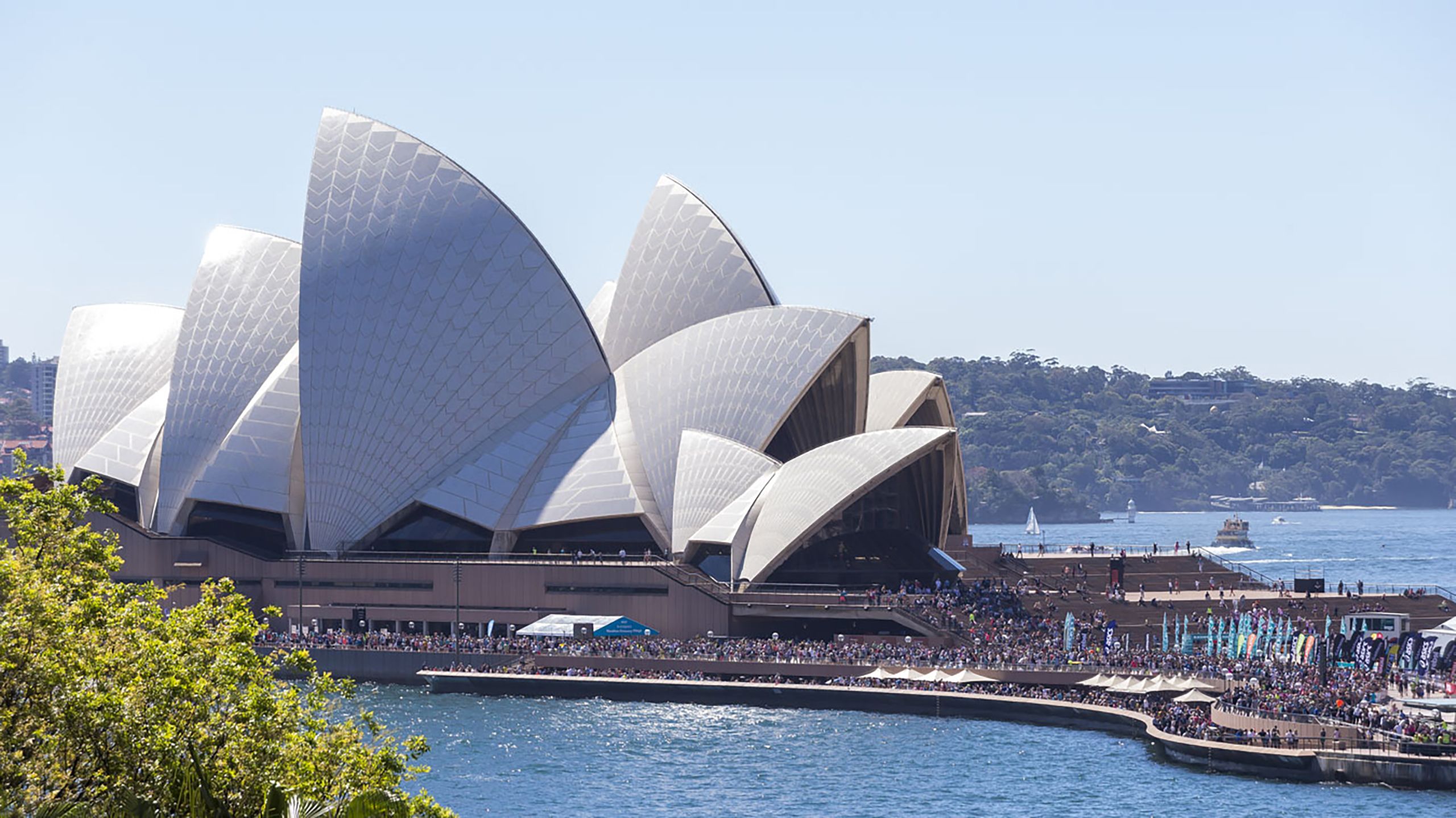

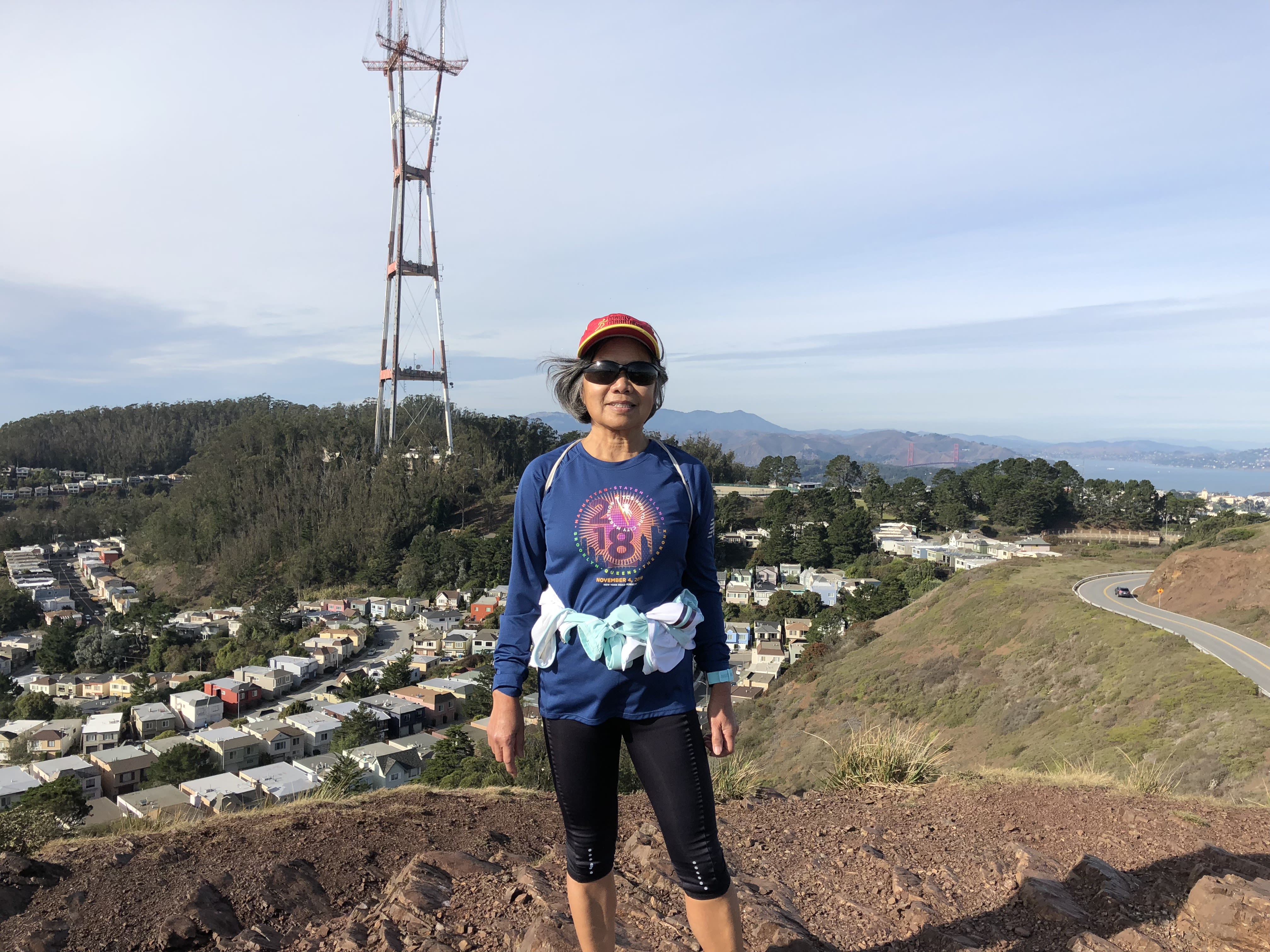
THE CENTURION
How marathon runner Chau Smith stays happy and healthy in her 70s
WORDS Lorna Campbell
Chau Smith will be 73 when she runs for her Abbott World Marathon Majors Six Star medal in Tokyo this year.
With more than 100 marathons to her name, Chau has many running accolades to her name. The three-time Boston Qualifier is one of the oldest women to complete the seven continents in seven days aged 67, and she’s run a marathon in all 50 US States.
Born in 1947, her father was killed during the war in Vietnam the same year, forcing her mother into hiding. It was only when she turned three that her birth was officially registered (so she will actually be 76 when she completes her Six Star journey, but it is the age on her passport that she must use for her running endeavors.)
She moved to the US in 1969, married her husband Michael in 1983 and ten years later her four siblings and their families (25 of them) started to arrive in the U.S. Following a lengthy sponsorship process, the emotional and financial stress of helping them settle in, on top of running her own business took its toll.
Chau developed back and neck problems and was on the brink of having back surgery when she decided to stop cycling behind her husband during his training runs, and instead join him. The transition helped build her confidence and manage her pain, and running continues to be a healthy choice for her.
“I run to stay healthy, and it has always helped me manage stress in my life,” she says.
THE RUNNING COUPLE
The idea of running the Abbott World Marathon Majors evolved as the marathon count increased (110 at the last check).
The couple started taking their vacations to destinations where they could also run a marathon.
“The strength of our relationship is in doing things together. Running has kept us healthy and traveling enables us to develop an appreciation of other people and other cultures.”
Running the Bank of America Chicago Marathon in 2003 for her first star, she made it to Boston ten years later to run her Majors PR of 4:30:18. Five years later it was time for Major number three in New York City; London in 2021 and Berlin in September last year for her penultimate star.
“Tokyo will be the crown jewel of my marathon career. We’ve never been to Japan, so this really will be a trip of a lifetime.”
As running in your 60s and 70s becomes more common, Chau also has some tips for others looking to follow in her footsteps.
“Always start slow – walking or running a short distance. It also helps if you have other people who are in the same shape, for mutual support.
“Join a local running club. I was lucky to have my husband to start running with. He always brags that he helped me become a runner. Now, he runs after me!”
Always consult a physician and get a full health evaluation prior to marathon training. Even if athletes appear healthy after treatment or surgery, or to have a disorder under control, underlying medical conditions could exist.
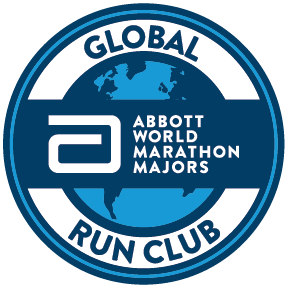
WELCOME TO THE CLUB!
The AbbottWMM Global Run Club challenges you all year round
The Global Run Club began in August 2020 as a virtual club where runners from all over the world can connect and compete through a monthly offering of challenges and races.
The club also provides articles and advice from a range of running-related experts, a club merchandise store and free marathon coaching plans and training tips from Andrew Kastor - coach to some of the world’s top distance athletes.
How does it work?
Sign up to the club and connect your tracker device (from 13 compatible options). When you use your device for a run or walk, these miles go towards any specific challenges or races you join on a specific day or month. Remember to connect your device and sign up for a challenge for your miles to count towards it.
You can track your performance and progress on challenges in our Global Run Club App or at globalrunclub.com.
What’s ahead?
Members can expect regular monthly challenges and races of a variety of distances to keep you motivated and moving in 2023.
We kick-off each month with a one-mile time trial then we rotate through a 5km/10km/half marathon race mid-month, and all your monthly miles can go towards our 50, 100 and 200-mile challenges.
Our next big event is the Spring 2023 Global Marathon. The race window begins at the Tokyo Marathon March 5 to the TCS London
Marathon on April 23. You can run your own 26.2 miles or if you are doing in-person marathon you can complete the virtual Global Marathon at the same time.
All registered runners aged 40 and above will be in contention for an invite to the 2024 AbbottWMM Wanda Age Group World Championships. We will have 200 invites for the highest-placed runners in the upcoming Global Marathon!
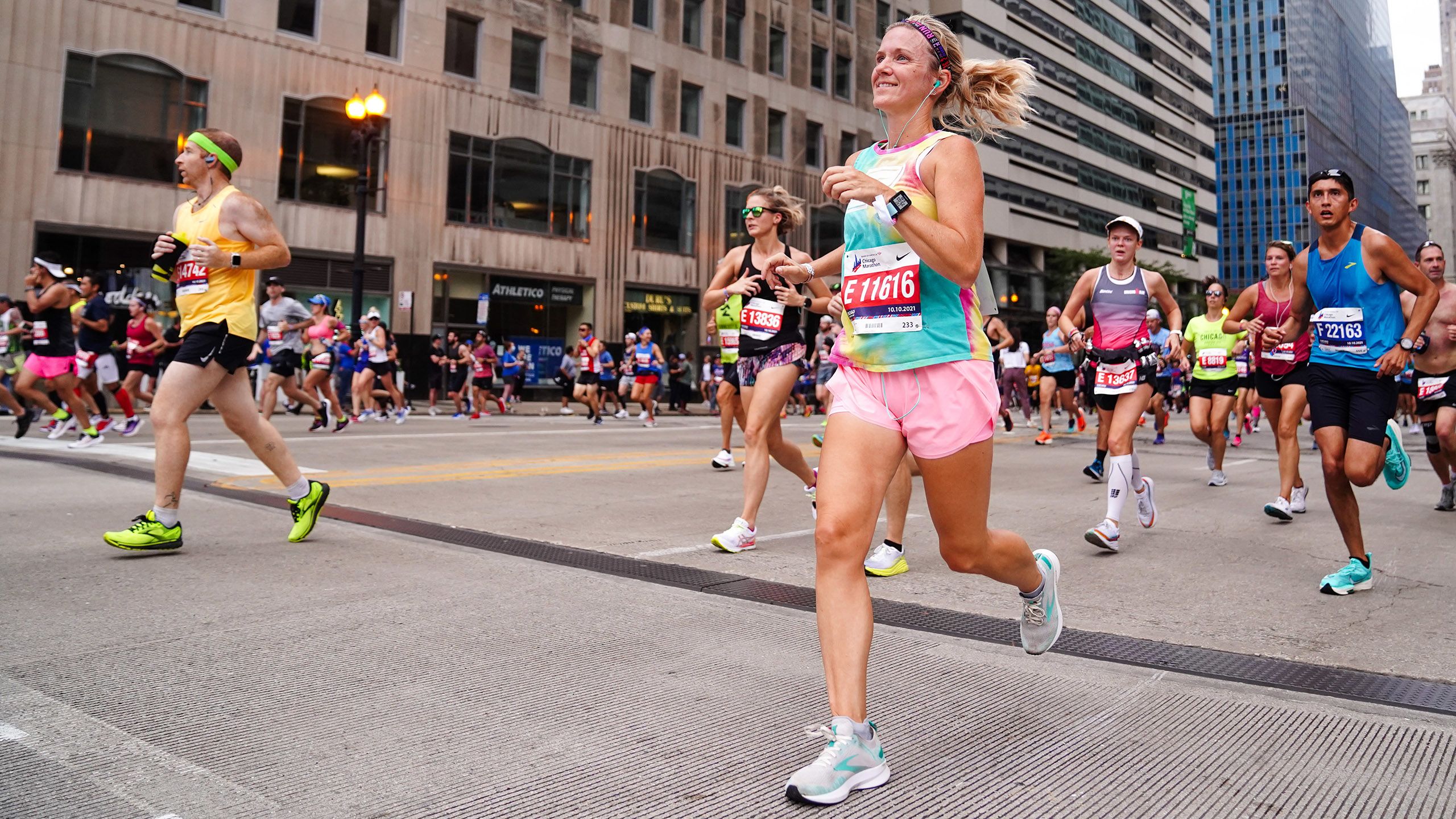
LONDON MARATHON APRIL 13 2003
A MAJOR MOMENT

On April 13, 2003, Paula Radcliffe sets a new world record in her home race, clocking 2:15:25 as she crosses the line on The Mall.
This is the Briton’s third success over the marathon distance, having won London and Chicago in 2002.
Radcliffe’s world -leading record will not be bettered for more than 16 years until Kenya’s Brigid Kosgei runs 2:14:04 on the streets of Chicago in 2019, where Radcliffe will be present to congratulate Kosgei as she passes the torch.
As we approach the 2023 TCS London Marathon, 2:15:25 still stands as the women’s course record in the UK Captial.
Another Kenyan great, Mary Keitany has come closest to threatening the course mark when she ran 2:17:01 at the 2017 London Marathon to set a new women’s only world record.
Radcliffe’s time, and Kosgei’s new record in 2019, were both set in races using male pacemakers for the elite women, so their records are known as the ‘mixed’ women’s world record.
